Nudge Unit
description: organization working with behavioural insights, in order to inform policy and public services
45 results
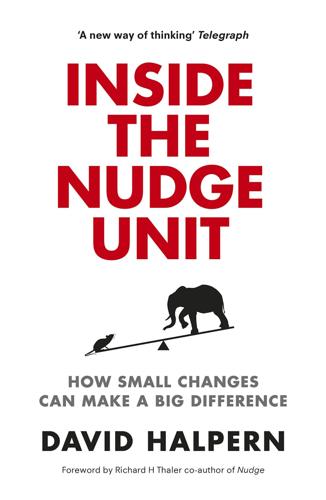
Inside the Nudge Unit: How Small Changes Can Make a Big Difference
by
David Halpern
Published 26 Aug 2015
(page numbers in italics refer to illustrations) advertising: and alcohol 100–1 and humour 100 and shock 98–100, 100 and smoking 99, 100 airport expansion 98 alcohol 100–1, 127 and calories 100 and pregnancy 126–7 Alexander, Danny 281 anaesthetics 17 ‘animal spirits’ 207, 210, 211 Aos, Steve 282 Ariely, Dan 96–7, 134, 325 Aristotle 221, 240 Armstrong, Hilary 34 Asch, Solomon 26 ASH (Action on Smoking and Health) 189 Ashford, Maren 57, 83 attentional spotlight 83–4 Ayres, Ian 142 Bazerman, Max 134, 325 Beales, Greg 36 Behavioural Insights Team (BIT) (see also nudging): arguments lost by 212–14 becomes social-purpose company 350 beginnings of x–xi, 50–8, 56, 58, 341 current numbers employed by xiii, 341 current trials by 341 expansion of xiii governments follow 11 initial appointments to 56–7, 56 initial scepticism towards 9 most frequent early criticisms of 333 naming of x–xi, 52–3 objectives of 54–5 and transparency, efficacy and accountability, see under nudging and webpage design 275–9, 276 World Bank’s request to 125 year of scepticism experienced by 274 behavioural predators 312–13 Benartzi, Shlomo 64 benefits, see welfare benefits Bentham, Jeremy 221–2 BIG lottery 283 ‘Big Society’ 43, 50, 142, 250 BIT, see Behavioural Insights Team Blair, Tony 151, 225 and behavioural approaches in government 302 Brown takes over from 36, 260–1 review into tenure of 34 Strategy Unit of 31 Tories’ admiration of 50 Bogotá 135, 146 Bohnet, Iris 123 Britton, John 188 Brown, Gordon 34 becomes PM 36, 260–1 Byrne, Liam 47 Cameron, David 151 BIT set up by 8 and Coalition Agreement 38 and data transparency 159 Hilton appointed by 43 and randomised controlled trials 274 and response to notes 186 and smoking 194 and well-being 225–8, 227, 250 car tax 3, 91, 92, 275–8 carrier bags 23 Centre for Ageing Better 282 Centre for Local Economic Growth (LEG) 282, 288 Chand, Raj 146 charities 116–20, 142–4, 144 and reciprocity 116 Chetty, Raj 64 childbirth, see pregnancy and childbirth Cialdini, Robert 34–6, 47, 107–8, 109, 113, 121–2, 308, 312 Clegg, Nick, and Coalition Agreement 38 Cochrane, Dr Archie 269–71, 295, 297 Cochrane Collaboration 271 cocktail-party effect 86 cognitive dissonance 21 cognitive psychology 27–9, 28 Colbourne, Tim 215 College of Policing 282, 289 Collins, Kevan 283, 285 Community First 254–5 commuting 219–20, 263–4 conflict and war 20–1, 27, 87, 344–5 consumer feedback 161–9, 167 improvements driven by 168–9 in public sector 163–9, 167 cooling-off periods 77 Council Tax 95 crime prevention (see also theft): ‘scared straight’ approach to 266–8, 267 and ‘What Works’ institutes 289 Darley, J. 27, 110 data transparency 153–84 and better nudges 179–80 and consumer feedback 161–9, 167 improvements driven by 168–9 in public sector 163–9, 167 and food labelling 172, 178 and machine-readable code 154, 157, 159 and RACAP 157 in restaurants 178 and understandable information 176–9 on cancer 178–9 on car safety 177–8 on financial products 177 and utility suppliers 154–60, 155 Davey, Ed 157 Deaton, Angus 243 decision fatigue 141 Deep Blue 7 Diener, Ed 231 disability-adjusted life years (DALYs) 272 discontinuity design 161–2 doctors’ handwriting 72, 72 Dolan, Paul 47–8, 220 Down, Nick 113 drivers’ behaviour 18, 18 Duckworth, Angela 247 Dunn, Elizabeth 220, 237, 250, 256 Durand, Martine 243 Dweck, Carol 343 e-cigarettes 188–97, 193, 215 estimated years of life saved by 195, 216 and non-smokers 193–4 and quit rates 192–3, 193 by socio-economic grouping 195 Early Intervention Foundation (EIF) 282 EAST (Easy, Attractive, Social, Timely) framework 10, 60, 149, 349 Attractive 80–105, 81, 85, 94 Easy 62–79, 68, 72, 73 and jobcentres 200 Social 106–25, 115, 118, 120, 122 (see also social influence) Timely 126–49, 129 Easterlin, Richard 238 eating habits 139, 171, 307 (see also obesity/weight issues) and choice 306–7 and food pyramid/plate illustrations 41, 41 and food tax 301–2 and healthy/unhealthy food 41, 82, 101–2, 216, 302 ‘mindless’ 171 Economic and Social Research Council 283 economy, UK 205–12 econs 6–7, 178, 223 education 137, 282 financial 64 further 146–7 and timely intervention 146–7 and ‘What Works’ institutes 283–7, 284, 286 Educational Endowment Foundation (EEF) 282, 283–7, 284, 286 Effectiveness and Efficiency (Cochrane) 295 endowment effect 140 Energy Performance Certificate 179 energy ratings 135 energy and utility suppliers, see utility suppliers Enterprise Bill 159 Epley, Nick 260–1 established behaviour, see habits ethnicity, and recruitment 137–9, 344 experimental government 266–98, 270, 272, 276 and crime prevention 266–8, 267 ethics of 325–8 (see also nudging: and accountability) and growth vouchers 279–80 and organ donation 275–9, 276 and overseas health-aid programmes 273 and radical incrementalism 291 and ‘What Works’ institutes 281–90, 292–4 Centre for Ageing Better 282 Centre for Crime Reduction 289 Centre for Local Economic Growth (LEG) 282, 288 Early Intervention Foundation (EIF) 282, 288 Educational Endowment Foundation (EEF) 282, 283–7, 284, 286 experimental psychology 24–6 farmers 145 ‘fat tax’ 301–2 (see also eating habits) fertiliser 145 Feynman, Richard 296, 297 financial crisis 45, 46, 206, 336 (see also UK economy) financial products 177, 206 fines, collecting 3–4, 52, 89, 90–1 Fischhoff, Baruch ix Fisher, Ronald 291 Fiske, Susan 84, 86, 325, 345 food pyramid/plate illustrations 41, 41 forms, prefilling 73–4 fossils 35 Frederick the Great 15, 16 Freud, Lord 279 Gallagher, Rory 55, 88–9, 158, 197–8, 204, 343, 349 gender equality, and company boards 123 Genovese, Kitty 109–10 Gigerenzer, Gerd 178 Gilbert, Danny 139, 220 Gino, Francesca 347 giving 116–20, 142–4, 144, 250 God Complex 269 Gove, Michael 287 Grant, Adam 347 Green Book 46, 228, 258, 259 Grice, Joe 233 Gross Domestic Product (GDP) 222–4, 255 (see also UK economy) Grove, Rohan 211 growth vouchers 279–80 Gyani, Alex 197–8, 203, 204, 343, 349 habits: and early intervention 128–32 key moments to prompt or reshape 132–9 and tax payments 131 Hallsworth, Michael 48, 113 Hancock, Matthew 279 hand washing 99, 140 happy-slave problem 231 Haynes, Laura 56–7 hearing 25 Heider, Fritz 345 Helliwell, John 226–7, 232 Henry VIII 17 herd instinct 161 Heywood, Sir Jeremy 2, 215, 217, 281 The Hidden Wealth of Nations (Halpern) 44 Highway Code 20 Hillman, Nick 165 Hilton, Steve x, 43–4, 51, 53–4, 159, 190, 214, 215, 225–6, 247, 250 and randomised controlled trials 274 hindsight bias ix HMRC 2–3, 8, 87–8, 89, 113, 115, 118, 120, 181–2 (see also tax payments) BIT member’s secondment to 113 non-tax-related business communications sent via 210–11 and online tax forms 74 and randomised controlled trials 274 Homer, Lin 210 honesty 133–4 honours 98 horses’ behaviour 18–19, 19 hospitals: and doctors’ handwriting 72, 72 and patient charts 72–3, 73 Hume, David 221 Hunt, Stefan 209 Hurd, Nick 250 Hutcheson, Francis 221 hyperbolic discounting 139 imprinting 128–9, 129 infant development 128–30 (see also pregnancy and childbirth) and early mother–child ‘meshing’ 129 (see also imprinting) in geese 128–9, 129 and mother’s depression 129 Influence: The Psychology of Persuasion (Cialdini) 34–5, 312 Inglehart, Ronald F. 229 Inland Revenue, see HMRC Institute for Government 40, 46–50 J-PAL 294 jobcentres 120–1, 197–205, 200, 201, 343, 349 (see also unemployment) John, Peter 96 The Joyless Economy (Scitovsky) 223 judges 140 Kahneman, Daniel 27, 29–30, 32, 48, 220, 226, 230 BIT’s work commended by 11 Kasparov, Garry 7 Kennedy, Robert F. 218, 222 Kettle, Stuart 125 Keynes, John Maynard 210, 211–12 King, Dom 48, 72 Kirkman, Elspeth 121, 146 knife crime 122 Kuznets, Simon 222 Laibson, David 64–5, 245, 307 Latene, B. 27, 110 Layard, Richard 225, 242, 248 Lazy Town 82 Legatum Institute 242–3 letters/messages, simplifying 71–3 and handwriting 72 in hospitals 72–3, 73 and prefilled forms 73–5 Letwin, Oliver 213, 217, 281, 295 Life satisfaction (discussion paper) 225 (see also well-being) Linos, Elizabeth 137, 344 List, John 286 litter 23, 35, 94, 107–8, 114 Loewenstein, George 307, 324, 345 loft/wall insulation 3, 75–6 Lorenz, Konrad 128–9, 129 lotteries, as incentive 94–6 Luca, Michael 161–2, 166, 177 Lyard, Richard 238 Lyons, Michael 250 MacFadden, Pat 34 Mackenzie, Polly 51, 215 Major, John 46 Manzi, James 295–6 Marcel, Anthony 136 Martin, Steve 113 Matheson, Jill 227 Mayhew, Pat 66 Mazar, Nina 347 Meacher, Michael 224 mental health 246–9 Merkel, Angela 243 midata, see data transparency Milgram, Stanley 26, 327 Miliband, Ed 34 military recruitment advertising 87 Milkman, Katherine 323 Mill, John Stuart 221 MINDSPACE framework 49–50, 50, 60, 72 motorcycle helmets 66–7 Mulgan, Geoff 225, 301–2 Mullainathan, Sendhil 343 National Citizenship Service (NCS) 251–2, 251 National Institute for Health and Care Excellence (NICE) 195, 271, 281, 290 Nesta 350 Nguyen, Sam 55, 197–8, 343 The Nicomachean Ethics (Aristotle) 240 nicotine-replacement therapy (NRT) 193, 193 (see also smoking) 9/11 28 Norton, Mike 256, 347 Nudge (Thaler, Sunstein) ix–x, 6–7, 39, 157, 234 Nudge Unit, see Behavioural Insights Team nudging (see also Behavioural Insights Team; EAST framework): and accountability 324–5 and experimentation, ethics of 325–8 and the public voice 328–32, 329 defined and discussed 22–4 and efficacy 304, 315–24 and familiarity with approach 319–24 relative 318–19 improving, with better data 179–80 rediscovery of 13 and subconscious priming 136 and transparency 304–15 and behavioural predators 312–13 and choice 306, 314–15 and effective communication vs propaganda 307–11, 311 Nurse Family Partnership 129 Obama, Barack 39–40, 254 acceptance speech of 38 Obama, Michelle 101 obesity/weight issues 101, 170–3, 307 (see also eating habits) in children, levelling of 173 and food labelling 172 and ‘mindless’ eating 171 O’Donnell, Sir Gus (later Lord) 45–6, 47, 57, 225, 227, 227, 242, 258 OECD 293, 340 Office of War Information (US) 21 Olds, David 130 online shopping 109 Ord, Toby 273 organ donation 9, 37, 52, 275–9 Orwell, George 309, 311 Osborne, George 45 and data transparency 159 O’Shaughnessy, James 247 Overman, Henry 288 Paley, William 221 paternalism x, 33, 51, 316 Pelenur, Marcos 135 pensions xii, 9, 62–5, 331 and choice 307 PMSU’s paper on 33 people’s parliaments 332 perception 24–5, 25 Personality responsibility and behaviour change (discussion paper) 301–2 police, ethnic recruits into 137–9, 344 potato consumption 15–16 pregnancy and childbirth 126–7 (see also infant development) Prescott, John 302 Prime Minister’s Strategy Unit (PMSU) 31–3, 47, 53, 225, 337 and Personality responsibility and behaviour change paper 301–2 psychological operations (PsyOps) 30, 308–9, 333 Putnam, Robert 253 radical incrementalism 291 randomised controlled trials (RCTs) 8, 113, 132, 182, 252, 270, 274–5, 283, 297–8, 339 and HMRC 274 Raseman, Sophie 157 RECAP 157 recycling 35 Red Tape Challenge 57 Reeves, Richard 51 Revenue and Customs, see HMRC road fuel 23 road traffic, see vehicles Roberto, Christine 101, 178 Rogers, Todd 146, 321 Rolls-Royce 208 Roosevelt, Franklin D. 21 Ruda, Simon 125, 137, 214, 344 Sainsbury, Lord (David) 46–7 Sanders, Michael 57, 116, 119, 142–3, 146 Scheving, Magnús 81, 82–3 Scitovsky, Tibor 223 Scott, Stephen 247 Seligman, Marty 232, 247 Sen, Amartya 231 Service, Owain 2, 56, 69 Sesame Street 101 Shadbolt, Sir Nigel 158 Shafir, Eldar 343, 345 sight 24–5, 25 Silva, Rohan x–xi, 43–5, 51, 53–4, 159 Singer, Tania 345 small businesses 205–9 passim (see also UK economy) smart disclosure 157 smoke detectors 99 smoking 9, 23, 99, 100, 138 and e-cigarettes 188–97, 193, 215 estimated years of life saved by 195, 216 and non-smokers 193–4 and nicotine-replacement therapy (NRT) 193 and pregnancy 126–7 prevalence of 189 and quit rates 192–3, 193 by socio-economic grouping 195 SNAP framework 48 social influence 26–7, 106–25 and bystander intervention 110 dark side of 109–10 and litter 107–8, 114 norms of: descriptive vs injunctive 108 picking apart 107–11 in policy 111–15 and online shopping 109 and personal touch 119–21 and reciprocity 115–17 social psychology 107 Soman, Dilip 337 Southern Cross station staircase 85 speed bumps 76–7 Sportacus 81–3, 81 Stanford Prison 26–7 Steinberg, Tom 254 stickk.com 142 subconscious priming 136 suicide 67–9, 68, 77 Sunstein, Cass ix–x, 6–7, 22, 39–42, 44, 57, 73, 305, 307, 314 and RACAP 157 supermarkets 80–1, 84, 86, 171–2 and food labelling 173, 178 Sutherland, Rory 187–8 tailored defaults. 307 tax payments 3, 8, 23, 52, 87–8, 88, 89, 112–14, 118, 120, 131, 181–2 in Central America 125 Council Tax 95 and habits 131 and lottery incentive 96–7 and online tax forms 74–5 and randomised controlled trials 274 road duty 3, 91, 92, 275–8 social-norm-based approach to 113, 115 Tetlock, Philip 192 Thaler, Richard 6–7, 22, 39, 44, 50, 51, 53, 57, 305 and BIT’s name 53 and RACAP 157 theft (see also crime prevention): mobile phones 173–6, 174, 175 and target-hardening 78, 214 vehicles: cars 169–70 motorcycles 66–7 time, perception of 128 time-inconsistent preferences 128, 139–45 Times 301–2 tobacco, see smoking Turner Lord (Adair) xii, 33, 331 Tversky, Amos 27, 29, 230 UK economy 205–12, 215, 216 (see also financial crisis; Gross Domestic Product) unemployment 120–1, 122, 197–205, 200, 201, 216, 343, 349 (see also jobcentres) and well-being 255–6 utilitarianism 221–2 utility suppliers: and data transparency 154–60 switching among 153–4, 155–6, 155, 160, 213 vehicles 18–20 safety of 177–8 and speeding 76–7, 92–5, 100 varied penalties for 147 thefts of: cars 169–70 motorcycles 66–7 Victoria, Queen 17 visas 132 Vlaev, Ivo 48 Volpe, Kevin 320 voter registration 95–6 Walsh, Emily 123 Wansink, Brian 171, 306 war 20–1 war and conflict 20–1, 27, 87, 344–5 weight, see obesity/weight issues welfare benefits 8 and conditional cash transfers 135, 145 and timing of payments 135 well-being 218–65 and community 249–55, 251 and commuting 219–20, 263–4 by country 229, 238, 243 drivers of 235–41 material factors 237–9 social factors 239–41 (see also well-being: and community) sunny disposition 235–7 early concepts of 220–2 and GDP 222–4, 255 and governance and service design 258–62 and happy-slave problem 231 and income, work and markets 255–7 and Life satisfaction paper 225 measuring 222–4 big questions concerning 231–3 subjective 228–31 and mental health 246–9 and National Citizenship Service programme 251–2, 251 by occupation 244 and policy 242–3, 258 subjective 224, 228–31 and giving 250 (see also giving) by occupation 244–5 and prostitutes 231–2 UK government’s programme on 226–8, 233–5, 234, 240 unemployment’s effects on 255–6 and utilitarianism 221–2 What Works institutes 281–90, 292–4, 340 Centre for Ageing Better 282 Centre for Crime Reduction 289 Centre for Local Economic Growth (LEG) 282, 288 Early Intervention Foundation (EIF) 282, 288 Educational Endowment Foundation (EEF) 282, 283–7, 284, 286 When Harry Met Sally 160–1 ‘wicked problems’ 170 Willetts, David 165 World Bank 125, 293, 309, 340 World Values Survey (WVS) 229 yelp.com 161–2 Young, Lord 279 ACKNOWLEDGEMENTS THERE ARE MANY people who deserve thanks and credit for the work and results of the Behavioural Insights Team that this book describes, and a rather shorter list for the writing and editing of the book itself.
…
Well-being: Nudging ourselves, and each other, to happier lives 10. What works? The rise of experimental government Section 4 Where next? 11. Risks and limitations 12. Conclusion: Where next? Notes Index Acknowledgements Copyright About the Book This is the story of an experiment. The Behavioural Insights Team, or ‘Nudge Unit’ as it came to be called, was set up in Downing Street in 2010 by Prime Minister David Cameron. The team’s objectives read like a mission impossible: to transform the approach of at least two major departments; to inject a new and more realistic understanding of human behaviour across UK government; and to deliver a 10-fold return on its cost.
…
Nothing came of the French effort aside from an excellent lunch, but we made good use of our time together on the Eurostar to think about what the team might do and other important matters, including deciding what it should be called. We eventually settled on the Behavioural Insights Team, though Rohan prophetically predicted that the formal name of the team would be irrelevant since everyone would just call it the ‘Nudge Unit’. Now, five years later, it is hard to imagine what would have become of the effort had Rohan not convinced David Halpern to come back from the comfortable, good life working at the UK’s Institute for Government and as an academic at Cambridge, to resume a full-time role in government.
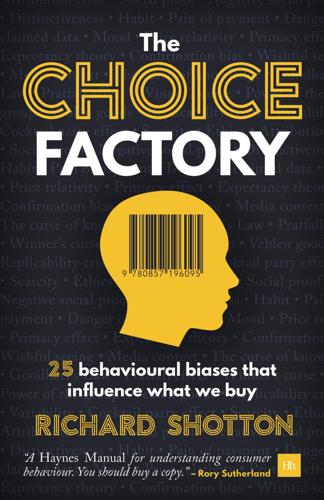
The Choice Factory: 25 Behavioural Biases That Influence What We Buy
by
Richard Shotton
Published 12 Feb 2018
It shows that people don’t make decisions in isolation but are strongly influenced by their peers. The strength of the book is that it’s full of practical recommendations and lots of interesting examples of how brands have harnessed the social nature of their customers. Inside the Nudge Unit [David Halpern, 2015] This is an excellent book written by the CEO of the Behavioural Insight Team, the organisation set up to apply behavioural science to government policy. It outlines four broad approaches to: make it easy, attractive, social and timely. These themes are just as applicable to commercial advertising as government advertising.
…
What more do you need from a recommendation? Behavioural Insights Team Reports This is a fascinating collection of government experiments conducted by the Behavioural Insight Team. Their annual reports are full of examples of behavioural principles being applied and the results. One of the unique elements of the reports is that they discuss what didn’t work as well as what did. Another strength is the analysis of what makes for a robust test. The 2015–16 report can be downloaded for free here: www.behaviouralinsights.co.uk/publications/the-behavioural-insights-teams-update-report-2015-16 The Wiki Man [Rory Sutherland, 2011] This is probably my favourite book on behavioural science and certainly the only one I have read three times.
…
The situation was even more extreme among the top 1%, who owed upwards of £30,000. Their repayment levels dropped by a massive 35% when social proof messaging was used. David Halpern, CEO of the Behavioural Insight Team, hypothesised that those running large businesses with sizeable tax bills viewed themselves as unique, which rendered social proof counter-productive: they believe that the behaviour of others is irrelevant to them. Given this fascinating finding, the Behavioural Insight Team decided to explore further. In 2015 they ran a test among 98,784 debtors to understand which message would work best among the biggest debtors. The most effective message focused on the repercussions of unpaid tax: it emphasised that we all lose out on public services, such as the NHS, when tax isn’t paid on time.
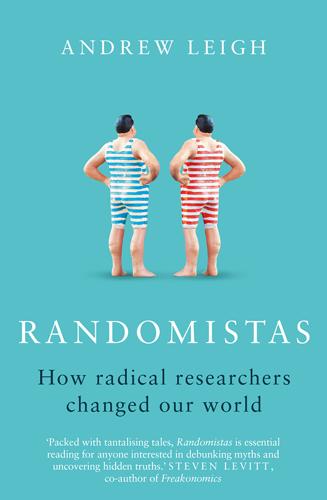
Randomistas: How Radical Researchers Changed Our World
by
Andrew Leigh
Published 14 Sep 2018
The competition continues to operate through a non-profit foundation, which has announced that it will fund all proposals that receive a high rating from its review panel.8 Simplicity is at the core of the approach taken by the behavioural insights teams which are emerging in central government agencies across the globe. In 2010 the British government became the first to establish a so-called ‘Nudge Unit’, to bring the principles of psychology and behavioural economics into policymaking. The interventions were mostly low-cost – such as tweaking existing mailings – and were tested through randomised trials wherever possible. In some cases they took only a few weeks. Since its creation, the tiny Nudge Unit has carried out more randomised experiments than the British government had conducted in that country’s history.9 The Nudge Unit focused on ‘low cost, rapid’ experiments.10 It found that letters asking people to pay their car tax were 9 percentage points more effective if they included a photograph of the offending vehicle, along with the caption ‘Pay Your Tax or Lose Your Car’.11 A personally scribbled note on the envelope along the lines of ‘Andrew, you really need to open this’ increased taxpaying by 4 percentage points.
…
After reading Leigh’s book, you’ll be baffled at the many businesses and governments yet to catch on. Fortunately, Leigh also offers a simple guide that anyone can follow. If the next generation of policymakers follows his advice – and let’s hope they do – this book will literally change the world.’ DAVID HALPERN, head of the UK’s Behavioural Insights Team, author of Inside the Nudge Unit ‘Randomistas takes the reader on a great journey about how data and experiments can make the world a better place, one policy at a time.’ DEAN KARLAN, professor of economics at Yale ‘The subject of this book could hardly be more vital: are we humble enough to admit we may be wrong, and do we care enough to learn?
…
If you’re interested in reading more, I particularly recommend Ian Harris’s Surgery, the Ultimate Placebo (on medical trials); Dean Karlan and Jacob Appel’s More Than Good Intentions and Abhijit Banerjee and Esther Duflo’s Poor Economics (on trials in developing countries); Uri Gneezy and John List’s The Why Axis (on experiments in business and philanthropy); Alan Gerber and Donald Green’s Get Out the Vote! (on political randomised trials); David Halpern’s Inside the Nudge Unit (on policy trials); and Tim Harford’s Adapt (on the philosophy of experimentation). For devotees, the two-volume Handbook of Field Experiments, edited by Esther Duflo and Abhijit Banerjee, provides a detailed survey of the subject. For tips on running your own randomised trial, check out Rachel Glennerster and Kudzai Takavarasha’s Running Randomised Evaluations, Dean Karlan and Jacob Appel’s Failing in the Field, the British Behavioural Insights Team’s Test, Learn, Adapt handbook, and the Australian BETA Unit’s Guide to Developing Behavioural Interventions for Randomised Controlled Trials.
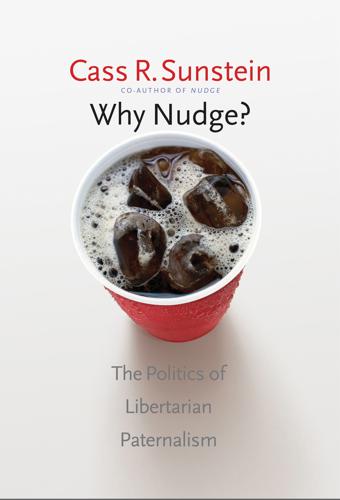
Why Nudge?: The Politics of Libertarian Paternalism
by
Cass R. Sunstein
Published 25 Mar 2014
Marteau et al., Changing Human Behavior to Prevent Disease: The Importance of Targeting Automatic Processes, 337 SCIENCE 1492 (2012) (exploring role of automatic processing in behavior in the domain of health). 25. See The Behavioural Insights Team, CABINET OFFICE, http://www.cabinetoffice.gov.uk/behavioural-insights-team (last visited Dec. 10, 2012). 26. Id. 27. Various reports can be found at the website of the Behavioural Insights Team. See id. 28. See Oliver Wright, Steve Hilton’s “Nudge Unit” Goes Global, INDEPENDENT (London), Sept. 20, 2012, http://www.independent.co.uk/news/uk/politics/steve-hiltons-nudge-unit-goes-global-8157492.html. 29. See Consumer Policy Toolkit, ORG. FOR ECON. COOPERATION & DEV. (July 2010), http://www.oecd.org/sti/consumerpolicy/consumerpolicytoolkit.htm. 30.
…
These initiatives enlist such tools as disclosure, warnings, and default rules, and they can be found in many areas, involving fuel economy, energy efficiency, environmental protection, health care, and obesity.23 Indeed, behavioral findings are providing an important reference point for regulatory and other policymaking in the United States.24 In the United Kingdom, Prime Minister David Cameron created a Behavioural Insights Team with the specific goal of incorporating an understanding of human behavior into policy initiatives.25 The official website states that its “work draws on insights from the growing body of academic research in the fields of behavioural economics and psychology which show how often subtle changes to the way in which decisions are framed can have big impacts on how people respond to them.”26 The Behavioural Insights Team has used this research to promote initiatives in numerous areas, including smoking cessation, energy efficiency, organ donation, consumer protection, charitable donation, and compliance strategies in general.27 Other nations have expressed keen interest in its work, and its operations are expanding.28 In 2013, the Obama administration created its own team to consider behavioral science and to bring empirical evidence to bear on government decisions.

The Hidden Half: How the World Conceals Its Secrets
by
Michael Blastland
Published 3 Apr 2019
Chapter 9 1 Disciplined pluralism is described in his book The Truth About Markets, London, Penguin, 2004, among other writings. 2 My Radio 4 colleague Tim Harford has suggested we encourage more Kay-like discipline with a prize for the best public change of mind. 3 David Halpern, Inside the Nudge Unit: How Small Changes Can Make a Big Difference, London, W. H. Allen, 2015. 4 The Behavioural Insights Team (aka the Nudge Unit) has useful resources on its website, including papers about experiment in government, such as: ‘Test, Learn, Adapt’. 5 Gabriel Ahlfeldt et al., ‘The Economics of Density: Evidence from the Berlin Wall’, Econometrica, vol. 83, no. 6, 2015, pp. 2127–2189. 6 Lurking behind this sentence is an increasingly fraught argument about the value of randomized controlled trials.
…
A recent practical example of the attempt to put the theory to use came when advisors to the UK government used social proof to try to persuade more people to sign up to a register to donate their organs for transplant after their death.12 Given a straw of hopeful theory, governments often grab it, especially if it’s congenial for other political reasons. Wisely, the Behavioural Insight Team – also known as the Nudge Unit – didn’t do that. Instead, they ran an experiment in which they tested messages inspired by the theory against others. The organ donation campaign targeted people visiting a government website to renew their driving licence. Some were shown one of three messages embracing the principles of social proof, in essence: ‘lots of people agree to donate their organs after their death, perhaps you’d like to do the same?’
…
This patchwork of sometimes-fragile psychological results hardly invalidates the whole field but complicates the business of making practical policy.’ How do we know whether to use the theory? Will it help or harm? These uncertainties confirm the value of the experimental approach of the Behavioural Insight Team. They take a theory, turn it into a trial, then see what happens. If it works in a particular context, good, it works. Carry on. If it doesn’t, stop. As the team said in its review of the organ donor trial, the experimental method is all important: ‘These findings are therefore not just important for understanding what motivates people to join the [donor] Register.

Spike: The Virus vs The People - The Inside Story
by
Jeremy Farrar
and
Anjana Ahuja
Published 15 Jan 2021
Number 10 advisers Ben Warner and Dominic Cummings showed signs of increasing unease at the SAGE meetings they attended. Patrick Vallance was becoming anxious, too. And then herd immunity stampeded on to the scene. It caused a public outcry. David Halpern, the head of the Behavioural Insights team at Number 10 (often called the ‘nudge unit’), was at the 10 March SAGE meeting. On the same day, he told BBC News: ‘There’s going to be a point, assuming the epidemic flows and grows, as we think it probably will do, where you’ll want to cocoon, you’ll want to protect those at-risk groups so they basically don’t catch the disease, and by the time they come out of their cocooning herd immunity’s been achieved in the rest of the population.’
…
Sunetra Gupta Professor of theoretical epidemiology at Oxford, Gupta was one of three academics responsible for the Great Barrington Declaration, which proposed allowing the virus to sweep through the population quickly so that herd immunity could build up, while the vulnerable were shielded. Her claim that half the UK population had already been infected and therefore acquired immunity was contradicted by antibody evidence. David Halpern Head of the UK government’s Behavioural Insights team (often called the ‘nudge unit’), he gave the first interview that mentioned herd immunity. Matt Hancock MP for West Suffolk since 2010 and Secretary of State for Health and Social Care since 2018. On 19 March 2020, he introduced the Coronavirus Bill, giving the police sweeping powers, to the UK Parliament.
…
We understood that people would comply with measures if the rationale was explained, the reasons were transparent, they were applied consistently, and they were not disadvantaged by complying. It is still the case that the government must own the strategy it pursued, rather than hide behind the scientists. Cummings says he thought these ideas originated on SPI-B or SAGE, but I dispute this. It should be noted that the UK government does have its own Behavioural Insights team and David Halpern (head of that team) gave the first interview mentioning herd immunity. This bitterly contested issue – over where the science that informed the UK pandemic response came from – highlights the lack of people inside Number 10 with the technical expertise to challenge poor science.
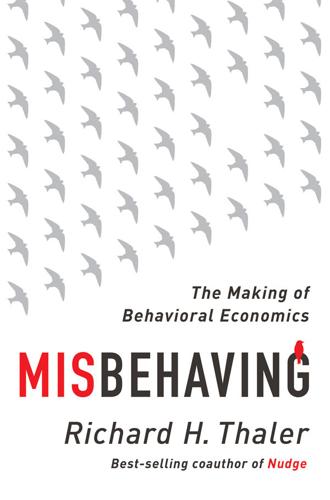
Misbehaving: The Making of Behavioral Economics
by
Richard H. Thaler
Published 10 May 2015
On the train ride over, Steve Hilton and I got into a heated debate about what the new team should be called. Steve wanted to use the term “behavior change,” which I thought had awful connotations. David Halpern and I were lobbying for Behavioural Insights Team, the name finally chosen. The argument consumed most of the trip to Paris. At some point Rohan took Steve aside and told him to give in, arguing, prophetically, that “no matter what we name it, everyone will call it the ‘nudge unit.’” By the time of my next trip to London, the initial team had been established and was set up in temporary facilities in an obscure corner of the Admiralty Arch, located a short walk away from 10 Downing Street and Parliament.
…
While I was kibitzing the efforts of the U.K. Behavioural Insights Team, Cass was busy in Washington serving as the administrator of the Office of Information and Regulatory Affairs, known as OIRA (pronounced “oh-Ira”). Formally a part of the Office of Management and Budget in the White House, OIRA was formed in 1980 with the mission to evaluate the economic impact of new governmental regulations to assure they do more good than harm. Although he did not have a mandate or budget to run randomized control trials, to some extent Cass was able to serve as a one-man Behavioural Insights Team during President Obama’s first term.
…
Behavioral economics is now a growing branch of economics, and its practitioners can be found in most of the best universities around the world. And recently, behavioral economists and behavioral scientists more generally are becoming a small part of the policy-making establishment. In 2010 the government of the United Kingdom formed a Behavioural Insights Team, and now other countries around the world are joining the movement to create special teams with the mandate to incorporate the findings of other social sciences into the formulation of public policy. Businesses are catching on as well, realizing that a deeper understanding of human behavior is every bit as important to running a successful business as is an understanding of financial statements and operations management.

Markets, State, and People: Economics for Public Policy
by
Diane Coyle
Published 14 Jan 2020
The UK was again an innovator here, the first to set up a special policy unit to develop nudge policies: the Behavioural Insights Team (BIT) in 2010 (it was partly privatized as a social-purpose company in 2014 and now provides consultancy to other governments and to businesses). Australia, Japan, and the US established similar units more recently. In Australia, New South Wales set up a Behavioural Insights Unit (BIU) in 2012. In the US, the Social and Behavioral Sciences Team (SBST) was set up in 2014 and put on ice by President Trump, but not before introducing a range of schemes and pilots in several areas of social policy. Japan set up its nudge unit in 2017, with a remit to focus on environmental, health, and education policies.
…
It seems on the face of it hard to object to the deployment of choice architecture, because apart from anything else there is always going to be some choice architecture and surely it should nudge people to better choices rather than worse ones. If either fries or salads have to be at the front of the counter in the school cafeteria, why would you not prioritize the healthier option? Why would it be a good idea to leave the fries prominent just because that is what happens now? The UK Behavioural Insights Team has distilled its advice into a few bullet points (box 5.3). Their recommendations sound straightforward. In fact, quite a lot of “behavioral” policy advice seems to boil down to common sense (not that common sense always prevails in policy-making). For example, keeping forms simple and making information visually attractive come into this category.
…
There is certainly no policy takeaway as straightforward as the more conventional policy approaches such as, “raise taxes to discourage consumption.” Deploying nudges without the relevant nuanced understanding can be counterproductive, and it is similarly highly unlikely that behavioral policies can be transplanted easily from one country or state to another. Box 5.3. Advice from the Behavioural Insights Team Make It Easy: Harness the power of defaults. Reduce the “hassle factor” of signing up for a service. Simplify messages. Make It Attractive: Attract attention. Design rewards and sanctions for maximum effect. Make It Social: Show that most people perform the desired behavior. Use the power of social networks.
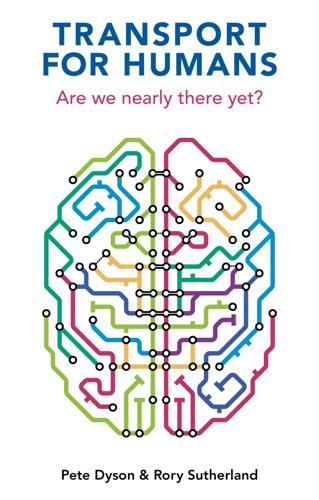
Transport for Humans: Are We Nearly There Yet?
by
Pete Dyson
and
Rory Sutherland
Published 15 Jan 2021
Now we can entertain the idea that public transport can be comfortable and indulgent: bigger seats and tables show social status during and after the journey (a fact enhanced by social media). A cunning innervation is already in place to harness signalling as a way to increase the status of the electric car as a signal that the driver cares for the environment. An idea from the Behavioural Insights Team in 2020 led to the UK government changing the number plates on battery-powered electric vehicles from yellow to green. It’s now as obvious as a peacock’s tail when you car is electric, helping to give the EV transition extra visibility and transparency.19 Rethinking costs Reframe the purpose of tax Making car users pay more for the privilege of driving will always have a role, of course.
…
Journal of Applied Psychology 49(4), 284. 8 M. H. Bazerman and D. A. Moore . 2012. Judgment in Managerial Decision Making, 8th edn, chapter 14. Wiley. 9 M. Hallsworth, M. Egan, J. Rutter and J. McCrae. 2018. Behavioural government: using behavioural science to improve how governments make decisions. Report, Behavioural Insights Team (www.bi.team/wp-content/uploads/2018/08/BIT-Behavioural-Government-Report-2018.pdf). 10 B. Flyvbjerg. 2017. Introduction: the iron law of megaproject management. In The Oxford Handbook of Megaproject Management, edited by B. Flyvbjerg, pp. 1–18. Oxford University Press. 11 B.
…
Working flexibly and making decisions through digital platforms has obvious upsides for individuals, but it also has hidden downsides for organizations – downsides that warrant careful intervention. Further reading Bohnet, I. 2016. What Works. Harvard University Press. Hallsworth, M., Egan, M., Rutter, J., and McCrae, J. 2018. Behavioural government: using behavioural science to improve how governments make decisions. Report, Behavioural Insights Team, Institute for Government. Kahneman, D., Sibony, O., and Sunstein, C. 2021. Noise: A Flaw in Human Judgment. William Collins. * * * 29 P. Dolan, M. Hallsworth, D. Halpern, D. King and I. Vlaev. 2010. MINDSPACE: influencing behaviour for public policy. Discussion document, Institute for Government (www.instituteforgovernment.org.uk/sites/default/files/publications/MINDSPACE.pdf). 30 US Bureau of Labor Statistics. 2020.
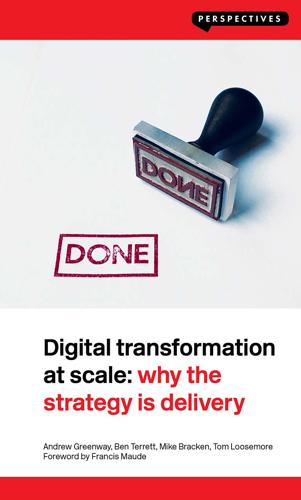
Digital Transformation at Scale: Why the Strategy Is Delivery
by
Andrew Greenway,Ben Terrett,Mike Bracken,Tom Loosemore
Published 18 Jun 2018
Digital transformation is not really about replacing old skills with new; it is about balancing old skills and new, and putting them to work together. Retrospective: organ donation In 2012, the UK government began experimenting with new ways to increase the number of people donating organs after they had died. The Behavioural Insight team, also known as the ‘Nudge Unit’ – a crack unit of policy experts and economists – believed a likely route to success would be to amend the paper form that people used to apply for a provisional driving licence, adding a call to action that encouraged donations. They were working with operational officials in the DVLA to make this happen, but the logistical difficulties involved in updating paper-based processes were slowing them down.
…
Amending the provisional licence form wasn’t just operationally difficult; it didn’t actually turn out to be that good an idea. Most provisional licence forms were filled out by prospective new teenage drivers or their parents. Neither group was particularly engaged by reading a sentence at the top of a long form that confronted them with their mortality, however elegant its drafting. The Nudge Unit tested one new version of the sentence on the paper form, and the number of donations went down. The early pioneers of e-government in the UK had long said that a goal for the new GOV.UK should be to make better use of the ‘golden page’ – the final page of a transaction. In companies, the golden page had become known as the best point to cross-promote additional or complementary goods.
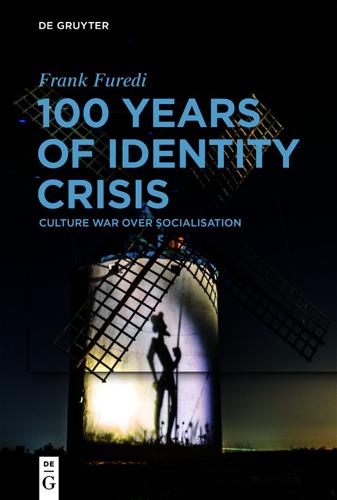
100 Years of Identity Crisis: Culture War Over Socialisation
by
Frank Furedi
Published 6 Sep 2021
It was explicitly pursued by David Cameron during his tenure as Prime Minister of the UK. Cameron helped set up the Behavioural Insight Team in 2010, which was charged with the task of developing policies that could shape people’s thoughts, choices and actions. This team, known as the ‘Nudge Unit’, operated on the assumption that attempting to convince the electorate of government policies is pointless; subliminal psychological techniques and manipulation were considered more effective than democratic debate and argument. When Britain’s former Deputy Prime Minister Nick Clegg casually remarked that the Nudge Unit ‘could change the way citizens think’, he spoke a language usually associated with a totalitarian propaganda agency.753 Nudge-like classical forms of social engineering are justified on the assumption that the expert knows best.
…
Essays in Sociological Theory, Glencoe: The Free Press, p.160. 745 www.equalityhumanrights.com/en/equality-act/protected-characteristics (accessed 12 February 2021). 746 For a discussion of the politics of behaviour see Leggett (2014) ‘The politics of behaviour change: nudge, neoliberalism and the state’, Policy & Politics, 42(1), 3 – 19. 747 See www.gov.uk/government/news/pm-launches-governments-first-loneliness-strategy (accessed 21 February 2021). 748 Cited in www.gov.uk/government/news/pm-launches-governments-first-loneliness-strategy (accessed 19 September 2020). 749 Tamsin Rutter (2016) ‘New research boosts crusade to embed happiness in public policy’, Global Government Forum, 15 December, www.globalgovernmentforum.com/new-research-boosts-crusade-to-embed-happiness-in-public-policy/ (accessed 4 March 2021). 750 Cited in Mark Easton (2006) ‘The politics of happiness’, BBC Home, 22 May, http://news.bbc.co.uk/2/hi/programmes/happiness_formula/4809828.stm. 751 Frank Furedi (2006) ‘Politicians, economists, teachers: why are they so desperate to make us happy/’, The Daily Telegraph, 7 May, www.telegraph.co.uk/comment/personal-view/3624819/Politicians-economists-teachers-why-are-they-so-desperate-to-make-us-happy.html (accessed 23 January 2019). 752 Tamsin Rutter (2016) ‘New research boosts crusade to embed happiness in public policy’, Global Government Forum, 15 December, www.globalgovernmentforum.com/new-research-boosts-crusade-to-embed-happiness-in-public-policy/ (accessed 4 March 2021). 753 www.theguardian.com/society/2010/sep/09/cameron-nudge-unit-economic-behaviour (accessed 23 September 2016). 754 See C.R. Sunstein and A. Vermeule (2020) Law and Leviathan: Redeeming the Administrative State, Cambridge, Mass: Belknap Press. 755 Cited in F. Jotterand (2011) ‘Will post-humans still need the virtues?’, AJOB Neuroscience, 2(4), 3 – 9, at 4. 756 T.
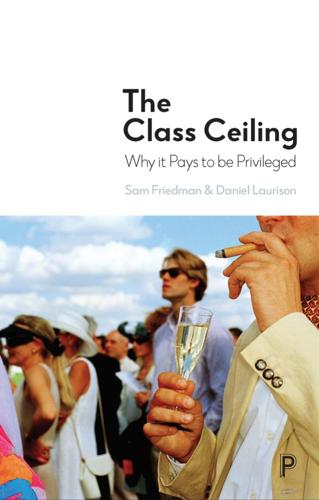
The Class Ceiling: Why It Pays to Be Privileged
by
Sam Friedman
and
Daniel Laurison
Published 28 Jan 2019
See Friedman et al (2015); Laurison and Friedman (2016). 306 Notes: Chapter NotesEight-Nine 35 36 37 38 Gary brings to mind Richard Hoggart’s autobiographical The uses of literacy (2009), the seminal text that charts the possibilities (and pains) of social ascent at a time of expanding opportunities. He eschewed the contemporary language of social mobility embraced more readily by professional service firms, feeling that architecture was now an established level-playing field. See Thaler and Sunstein (2009). The Behavioural Insights Team, also known as the Nudge Unit, is an organisation that was set up inside the Cabinet Office to apply nudge theory to UK government policy in many areas, including social mobility. Erickson’s (1996) classic study finds a similar effect in terms of the use of popular culture as a bridging tool that aids cross-class interaction and coordination in workplaces.
…
, Sociology, 43(4), 648-666 (https://doi. org/10.1177/0038038509105413). 358 Index Page numbers followed by ‘fig’ refer to figures, by ‘n’ to notes, and by ‘t’ to tables. 6TV 1–5, 73–7, 99–105 access and class 74–7, 99, 100, 104 Black and Minority Ethnic (BME) ethnic groups 73 Creative Assembly 145–7 cultural mimicry 177–8 departmental segregation 77 disempowerment 167 diversity 73 embodied cultural capital 201, 202, 206 feeding back to 219–20, 273 gender equality 73 hierarchy 75–6 internal cultural norms 147, 150–6 London based 73 playing safe 176 privileged 71, 74, 76, 77, 101, 102, 104, 105 progression 76–7 researching 242–4 social exclusivity 74–6 sponsorship 115–18 studied informality 134, 136–40 A Abbott, A. 195 absolute mobility 7, 8 academia 33fig, 35fig, 41fig, 42fig, 53fig access to elite occupations 9–13, 29–44 Bangladeshi ethnic group 40, 42, 43, 44 Black ethnic group 40, 43, 44 Black and Minority Ethnic (BME) ethnic groups 40 Chinese ethnic group 42, 43 disability and 41 education 35–9 gender and 40, 41, 42fig Indian ethnic group 42, 43 intersectionality 40–4 micro-class reproduction 34–5 Pakistani ethnic group 40, 43, 44 privileged groups 19, 31, 32, 33fig, 34, 38, 39fig, 41, 42, 43 racial-ethnic groups 41fig, 42, 43fig working-class 31fig, 33fig, 34fig, 36fig, 37, 38, 39fig, 40, 41, 43, 44 white ethnic group 44 accountability 235 accountancy 359 The Class Ceiling access to 33fig class pay gap 53fig, 54 family financial support 105–6 female representation 42fig micro-class reproduction 35fig progression in 19 racial-ethnic representation 41fig see also TC (Turner Clarke) acting profession backgrounds 84–5 Black ethnic group 97, 98 Black and Minority Ethnic (BME) ethnic groups 99 class pay gap 85 cultural insecurity 181–2 female representation 99 parental financial support 87–99, 101, 103, 105, 106 privileged groups 90, 92, 93 racial stereotyping 94 typecasting 89, 93–9 voice and class 156–8 working-class 93, 99 advertising 33fig, 35fig, 41fig, 42fig, 53fig aesthetic disposition 150–6, 197, 200–2 All-Party Parliamentary Group on Social Mobility, 7 Key Truths About Social Mobility 290n90 ambiguity of knowledge 161 ambulance service chiefs 33fig, 35fig, 40, 41fig, 42fig, 53fig ‘anxieties of affluence’ 103–5 ARB (Architects Registration Board) 301n25 architecture access to 32, 33fig, 34, 35fig, 37, 53fig class pay gap 53fig, 72 family financial support 105–6 female representation 42fig micro-class reproduction 35fig progression 54 racial-ethnic representation 41fig see also Coopers Ashcraft, K. 125, 310n24 Ashley, L. 19, 126–7, 133, 161, 223 Atkinson, W. 294n5 Australia, class pay gap 47 B Balding, C. 45 Bangladeshi ethnic group 20, 40, 41fig, 42–4, 49fig, 51, 52fig Banks, M. 288n54 BBC (British Broadcasting Corporation) class 74, 76 class inequality 46 Great British Class Survey (GBCS) 54, 239–40, 242 gender pay gap 45–6 Beck, U. 6, 6n16 Beck, U. et al 6n16 Becker, G.S. 316n100 behavioural codes 122, 124, 132, 134, 144, 164 Behavioural Insights Team, UK government 307n37 Bennett, T. et al 316n100 Black ethnic group 40, 43, 44 Blair, T. 5 BME (Black and Minority Ethnic) ethnic groups 40, 73, 99 Bottero, W. 313n61 Bourdieu, P. 14–15 and aesthetic disposition 150–6, 197, 200–2 on the body 314n72 on capital 186–7, 288n60, 309n5, 313n66 on ‘contradictions of succession’ 307n12 on culture 315n84 on ‘doxa’ 305n43 on field 308n3 on field of power 313n63 on habitus 307n9, 308n1, 308n18, 314n80, 314n81 360 Index Practical reason 313n62 on primary dispositions 289n69 on self-elimination 173 social theory 193–6 Bourdieu, P. and Passeron, J.

Robot Rules: Regulating Artificial Intelligence
by
Jacob Turner
Published 29 Oct 2018
Why a ‘Right to an Explanation ’ Is Probably Not the Remedy You Are Looking For” Duke Law and Technology Review, Vol. 16, No. 1 (2017), 1–65 (43). 54Vijay Panday, “Artificial Intelligence’s ‘Black Box’ Is Nothing to Fear”, New York Times, 25 January 2018, https://www.nytimes.com/2018/01/25/opinion/artificial-intelligence-black-box.html, accessed 1 June 2018. 55See Daniel Kahneman and Jason Riis, “Living, and Thinking About It: Two Perspectives on Life”, in The Science of Well-Being, Vol. 1 (2005). See also Daniel Kahneman, Thinking, Fast and Slow (London: Penguin, 2011). 56Indeed, the latter is so powerful that the UK Government created a specialist body—the Behavioural Insights Team (popularly known as the Nudge Unit) designed to influence people’s behaviour without them realising. Website of the Behavioural Insights Team, http://www.behaviouralinsights.co.uk/, accessed 1 June 2018. 57Campolo et al., AI Now Institute 2017 Report, https://assets.contentful.com/8wprhhvnpfc0/1A9c3ZTCZa2KEYM64Wsc2a/8636557c5fb14f2b74b2be64c3ce0c78/_AI_Now_Institute_2017_Report_.pdf, accessed 1 June 2018. 58For an example of a functional approach to explainable AI, see Todd Kulesza, Margaret M.
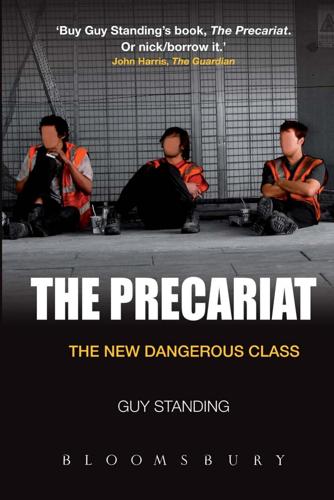
The Precariat: The New Dangerous Class
by
Guy Standing
Published 27 Feb 2011
On becoming US President, Obama appointed Sunstein to head the Office of Information and Regulatory Affairs, based in the White House. Meanwhile, in the United Kingdom, Conservative Party leader David Cameron told members of parliament to read the book; on becoming Prime Minister in 2010 he set up the Behavioural Insight Team, quickly dubbed ‘the Nudge Unit’, in Downing Street, advised by Thaler. The mandate was to induce people to make ‘better’ decisions, in the interest of ‘society’. Steering people is always questionable. How do we know that the nudgers know what is best for any individual? Today’s conventional wisdom becomes yesterday’s error.

Failures of State: The Inside Story of Britain's Battle With Coronavirus
by
Jonathan Calvert
and
George Arbuthnott
Published 18 Mar 2021
Over the next 48 hours the public would start to understand the implications of the government’s strategy – and it would prove very unpopular. A few hours after the fireplace chat, one of the government’s inner team, Dr David Halpern, gave a BBC interview in which he let the cat out of the bag and spelt out what all the delay tactics actually meant. Halpern was the chief executive of the government’s Behavioural Insights Team, known as the ‘nudge unit’, which had been set up in 2010 to advise the Cabinet Office on ways to influence the public to follow desirable policies. In this role he had been advising the prime minister on the virus strategy, and he was also a member of Sage. ‘There’s going to be a point, assuming the epidemic flows and grows as it will do, where you want to cocoon, to protect those at-risk groups so they don’t catch the disease,’ Halpern told the interviewer.
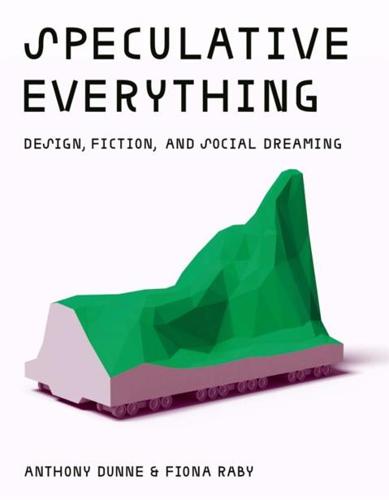
Speculative Everything: Design, Fiction, and Social Dreaming
by
Anthony Dunne
and
Fiona Raby
Published 22 Nov 2013
But once it moves beyond interactions with technology to the social or mass scale, it can feel more like social engineering. This is one of the difficulties we have with design thinking applied by service designers to public service projects. It can be used to modify our behavior in a slightly underhanded way. For example, on the UK Government's Cabinet Office website, it says the following: "The Behavioural Insights Team was set up in July 2010 with a remit to find innovative ways of encouraging, enabling and supporting people to make better choices for themselves. "4 We believe that our behavior does need to change, but it should be up to either individuals to make changes in their behavior (for example, in health and exercise) or the government to ban some kinds of behavior (such as smoking, which effects everyone, not just the smoker).
…
See Richard Thaler and Cass Sunstein, Nudge: Improving Decisions about Health, Wealth, and Happiness (London: Penguin, 2009). 3. For more on this, see B.J.Fogg, Persuasive Technology: Using Computers to Change What We Thin k and Do (Burlington, MA: Morgan Kaufmann, 2003). 4. Available at http://www.cabinetoffice.gov.uk/behavioural-insights-team. Accessed December 23, 2012. 5. Eric Olin Wright, E nvisioning Real Utopias (London: Verso, 2010), 23. 6. Ibid. 7. Keith Oatley, Such Stuff as Dreams: The Psychology of Fiction (Oxford: Wiley-Blackwell, 2011), 118. 8. Philip K.Dick, How to Build a Universe That Doesn't Fall Apart Two Days Later (speech given in 1978).
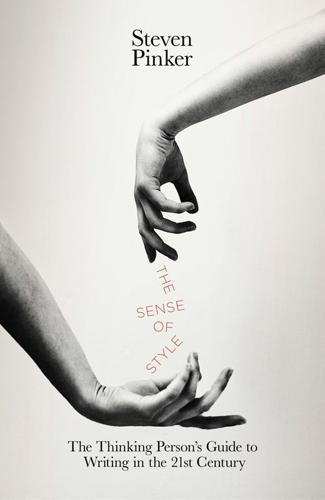
The Sense of Style: The Thinking Person's Guide to Writing in the 21st Century
by
Steven Pinker
Published 1 Jan 2014
Cognitive Psychology, 23, 45–93. Bransford, J. D., & Johnson, M. K. 1972. Contextual prerequisites for understanding: Some investigations of comprehension and recall. Journal of Verbal Learning and Verbal Behavior, 11, 717–726. Cabinet Office Behavioural Insights Team. 2012. Applying behavioural insights to reduce fraud, error and debt. London: Cabinet Office Behavioural Insights Team. Camerer, C., Lowenstein, G., & Weber, M. 1989. The curse of knowledge in economic settings: An experimental analysis. Journal of Political Economy, 97, 1232–1254. Chomsky, N. 1965. Aspects of the theory of syntax. Cambridge, Mass.: MIT Press.
…
See Garvey, 2009, for a discussion of criticisms that have been leveled at Strunk & White for its insistence on plain style, and Lanham, 2007, for a critique of the one-dimensional approach to style which runs through what he calls The Books. 8. Herring, 2007; Connors & Lunsford, 1988; Lunsford & Lunsford, 2008; Lunsford, 2013; Thurlow, 2006. 9. Adams & Hunt, 2013; Cabinet Office Behavioural Insights Team, 2012; Sunstein, 2013. 10. Schriver, 2012. For more on plain language laws, see the Center for Plain Language (http://centerforplainlanguage.org) and the organizations called Plain (http://www.plainlanguage.gov) and Clarity (http://www.clarity-international.net). 11. K. Wiens, “I won’t hire people who use poor grammar.
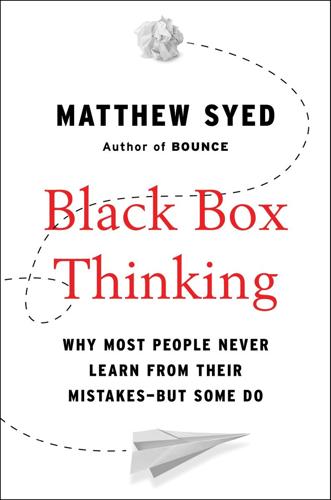
Black Box Thinking: Why Most People Never Learn From Their Mistakes--But Some Do
by
Matthew Syed
Published 3 Nov 2015
Too often, managers in charge of pilots design optimal conditions rather than representative ones. Thus the pilot doesn’t produce knowledge about what won’t work. Another powerful method we have looked at is randomized control trials. These are growing in the corporate world, but remain unexploited in many areas such as politics. The Behavioural Insights Team (BIT), a small organization that started life inside Number 10 Downing Street and is now a social purpose company, was set up in 2010 to address this problem. It has already conducted more RCTs than the rest of the UK government combined in its entire history (sadly, this isn’t saying much).
…
by Carol Tavris and Elliot Aronson, Uncontrolled by Jim Manzi, Teaming by Amy Edmondson, Where Good Ideas Come From by Steven Johnson, Creativity, Inc. by Ed Catmull, Self Theories by Carol Dweck, The Decisive Moment by Jonah Lehrer, and Philosophy and the Real World by Bryan Magee. I would also like to thank all of those who agreed to be interviewed, or who have read particular chapters, or helped in other ways. Many are mentioned within these pages, but I would like to separately acknowledge James Dyson, Owain Hughes, David Halpern and the Behavioural Insights Team, Jim Manzi, David Bentley, Carol Dweck, Robert Dodds, Sidney Dekker, Steve Art, Meghan Mahoney, the wonderful people at Mercedes F1 and Team Sky, Toby Ord, Mark McCarthy, Tony McHale, Rita Weeks, David Beckham, Steve Jones and Esther Duflo. Most of all, I would like to thank Kathy, my amazing wife, Evie and Teddy, our children, and Abbas and Dilys, my parents.
…
See Connelly, Peter (Baby P case) Bacon, Francis, 134n, 279, 280, 283 ballistic model of success, 145–46 Banja, John, 88–89 banking, 233 bankruptcy, 130 Barker, Steven, 236 Bayles, David, 140–41 Baylis, Trevor, 195 Becker, Jasper, 110 Beckham, David, 253–55, 265, 267, 274–76 Beebe, Rodrick, 21 Behavioural Insights Team (BIT), 291 Being Wrong (Schulz), 78 Berglas, Steven, 273–74 Berlinger, Nancy, 16, 90 Bernanke, Ben, 94–95, 98 Beyond Scared Straight (TV show), 166 Bible, the, 281 Birmingham Six, 117 black boxes, 8, 9, 25, 26, 221 black box thinking, 31 Blackstone, William, 65 Blair, Tony, 90–93, 94 blame, 12, 217–49 aviation and, 232, 239–49 cognitive dissonance and, 231 consequences of blame culture, 226–29, 231, 237–39 in corporate and political world, 225–31 fundamental attribution error and, 232 just culture and, 229–30 Libyan Arab Airlines Flight 114 and, 217–19, 221–25 media and, 234–35, 236–38 November Oscar incident and, 239–49 nursing/health care administration and, 226–27, 230–31 pervasiveness of, 225 politics and, 234 second victim and, 239 for social workers following Baby P case, 236–38, 239 Blind Watchmaker, The (Dawkins), 128 Blockbuster, 190 bloodletting, 13–14, 54, 154–56, 161–62 Boaler, Jo, 271, 272 Boeing B-17 bomber, 19, 54 bomber aircraft Boeing B-17 bomber, poor cockpit design of, 19, 54 Wald’s analysis of returning bomber aircraft, 35–37 Borchard, Edwin, 67 Boskin, Michael J., 95 Bounce (Syed), 45n Brailsford, Sir David, 171–73, 178, 179, 182, 183, 189 brainstorming, 196–97 Branson, Richard, 271 Brin, Sergey, 199 British Airways, 240, 241, 242, 246, 247 British Board of Trade, 56 Bromgard, Jimmy Ray, 77–79, 116 Bromiley, Adam, 4, 7, 294 Bromiley, Elaine, 3–7, 12, 15–16, 18, 28, 31, 60, 89, 292 Bromiley, Martin, 3–4, 6–7, 15–16, 18, 59–60, 292–94 Bromiley, Victoria, 4, 7, 294 Burns, Sir Terry, 98 Bush, George W., 73, 93, 111–12, 117 business blame and, 225–31 evolutionary, 129–31 mindset and, 259–61 randomized control trials (RCTs) and, 184–86 cadet training, at West Point, 261–63 Callace, Leonard, 69 Cameron, Julia, 200 Campbell, Alastair, 94 Campbell Collaboration, 164 Capello, Fabio, 135–36 Capital One, 185–86 capital punishment, 76 Carnot, Nicolas Léonard Sadi, 132 Catmull, Ed, 207, 208–9, 210 centrally planned economies, 130, 284 Chabris, Christopher, 117 Chapanis, Alphonse, 19 charities, 147–49 checklists, 30, 39, 53, 59 Chicago Convention, 224–25 China, 110, 271–72 Christianity, 279–80 Clinical Human Factors Group, 60, 293 clinical trials, 14 Clinton, Bill, 187 close crop planting, 110 closed loops, 13–14, 29–30, 58, 165 criminal justice system and, 66, 67 Iraq War decisions and, 93 justice system and, 85 randomized control trials (RCTs) and, 154–59 science and, 44 Cobley, Dan, 185 cognitive dissonance, 74–77, 86–107 ambiguity of failure and, 87 blame and, 231 confirmation bias and, 101–3 denial and, 74 disposition effect and, 101 economic forecasting and, 94–97 external versus internal deception and, 87, 88 health care and, 87–90, 103–7 initiation experiment and, 75–76, 86–87 Iraq War and, 90–94 justification and, 88–89, 90, 97–99 Lord’s capital punishment research project findings and, 76 reputation or influence of individual and, 98–100 responses to, 74 self-deception, 110–11 self-esteem and, 75–76 war, 278 wrongful convictions and, 79–83 collapsible stroller, 195, 199 Collins, Jim, 144, 204, 205, 206 communication, 28–29, 30, 39, 59 Communism, 108, 109, 110 complexity, 11 confirmation, 44 confirmation bias, 101–3, 280 connectivity, 199, 204 Connelly, Peter (Baby P case), 236–38, 239 Connelly, Tracey, 236 Conner, Aimee, 40 Convicting the Innocent and State Indemnity for Errors of Criminal Justice (Borchard), 67 Cook, Linda, 69 Corporate Creativity (Robinson & Stern), 179 counterfactual, 90n, 155, 157, 162, 165, 174, 175 court of criminal appeal, 67 cover-ups, 12–13, 88–89 Cowell, Andy, 182 Crandall, Bob, 179 creationism, 42–43 creative destruction, 130 Creativity, Inc.
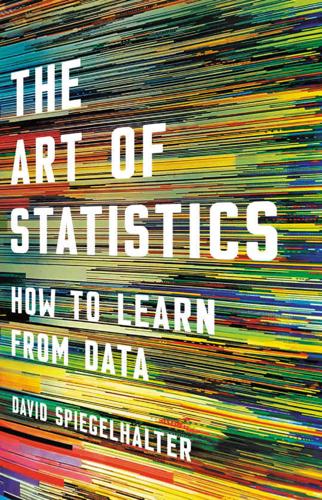
The Art of Statistics: How to Learn From Data
by
David Spiegelhalter
Published 2 Sep 2019
I remember watching patients lying on the pre-op trolley, with no idea which treatment they were going to get, while the anaesthetist opened the envelope to reveal what was going to happen to them, and in particular whether they were going to go home with one large scar or a set of punctures. Randomized trials became the gold standard for testing new medical treatments, and are now increasingly used to estimate the effects of new policies in education and policing. For example, the UK Behavioural Insights Team randomly allocated half of students retaking GCSE Mathematics or English to nominate someone to receive regular text messages that encouraged them to support the student in their studies—the students with a ‘study supporter’ had a 27% higher pass rate. The same team also observed a variety of positive effects in a randomized trial of body-worn video cameras for police officers, such as fewer people being unnecessarily stopped and searched.5 There have even been studies to determine the effectiveness of prayer.
…
‘MRC/BHF Heart Protection Study of Cholesterol Lowering with Simvastatin in 20,536 High-Risk Individuals: A Randomised Placebo-Controlled Trial’, The Lancet 360 (2002), 7–22. 4. Cholesterol Treatment Trialists’ (CTT) Collaborators, ‘The Effects of Lowering LDL Cholesterol with Statin Therapy in People at Low Risk of Vascular Disease: Meta-Analysis of Individual Data from 27 Randomised Trials’, The Lancet 380 (2012), 581–90. 5. Behavioural Insights Team trials are described in http://www.behavioural insights.co.uk/education-and-skills/helping-everyone-reach-their-potential-new-education-results/ and http://www.behaviouralinsights.co.uk/trial-results/measuring-the-impact-of-body-worn-video-cameras-on-police-behaviour-and-criminal-justice-outcomes/. 6.
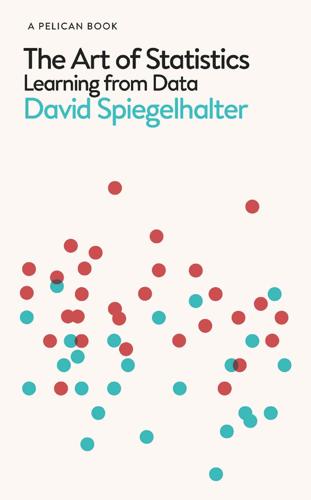
The Art of Statistics: Learning From Data
by
David Spiegelhalter
Published 14 Oct 2019
I remember watching patients lying on the pre-op trolley, with no idea which treatment they were going to get, while the anaesthetist opened the envelope to reveal what was going to happen to them, and in particular whether they were going to go home with one large scar or a set of punctures. Randomized trials became the gold standard for testing new medical treatments, and are now increasingly used to estimate the effects of new policies in education and policing. For example, the UK Behavioural Insights Team randomly allocated half of students retaking GCSE Mathematics or English to nominate someone to receive regular text messages that encouraged them to support the student in their studies – the students with a ‘study supporter’ had a 27% higher pass rate. The same team also observed a variety of positive effects in a randomized trial of body-worn video cameras for police officers, such as fewer people being unnecessarily stopped and searched.5 There have even been studies to determine the effectiveness of prayer.
…
‘MRC/BHF Heart Protection Study of Cholesterol Lowering with Simvastatin in 20,536 High-Risk Individuals: A Randomised Placebo-Controlled Trial’, The Lancet 360 (2002), 7–22. 4. Cholesterol Treatment Trialists’ (CTT) Collaborators, ‘The Effects of Lowering LDL Cholesterol with Statin Therapy in People at Low Risk of Vascular Disease: Meta-Analysis of Individual Data from 27 Randomised Trials’, The Lancet 380 (2012), 581–90. 5. Behavioural Insights Team trials are described in http://www.behaviouralinsights.co.uk/education-and-skills/helping-everyone-reach-their-potential-new-education-results/ and http://www.behaviouralinsights.co.uk/trial-results/measuring-the-impact-of-body-worn-video-cameras-on-police-behaviour-and-criminal-justice-outcomes/. 6.
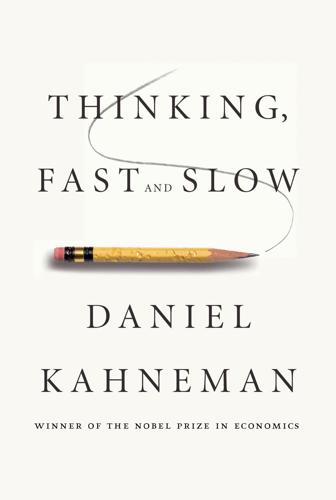
Thinking, Fast and Slow
by
Daniel Kahneman
Published 24 Oct 2011
The appeal of libertarian paternalism has been recognized in many countries, including the UK and South Korea, and by politicians of many stripes, including Tories and the Democratic administration of President Obama. Indeed, Britain’s government has created a new small unit whose mission is to apply the principles of behavioral science to help the government better accomplish its goals. The official name for this group is the Behavioural Insight Team, but it is known both in and out of government simply as the Nudge Unit. Thaler is an adviser to this team. In a storybook sequel to the writing of Nudge, Sunstein was invited by President Obama to serve as administrator of the Office of Information and Regulatory Affairs, a position that gave him considerable opportunity to encourage the application of the lessons of psychology and behavioral economics in government agencies.
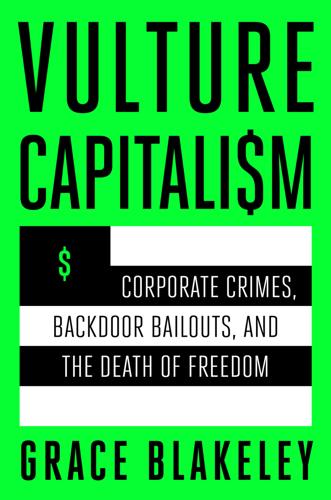
Vulture Capitalism: Corporate Crimes, Backdoor Bailouts, and the Death of Freedom
by
Grace Blakeley
Published 11 Mar 2024
One of those copies found its way into the hands of Prime Minister David Cameron, who in 2010 announced the creation of a “nudge unit” designed to change the choice architecture of UK society and “improve economic behavior.”107 The Nudge Unit has supervised the introduction of pension autoenrollment, introduced an “opt out” system for organ donation, and supported the government’s messaging during the pandemic. The unit was so successful that the government announced plans to turn it into a private institution.108 Those who have worked in the Nudge Unit have been hired by governments around the world to set up their own versions of the program. But there is a darker side to the Nudge Unit. Rather than rounding people up and forcing them to leave the country, the Nudge Unit supported a cross-government effort to make life in the UK as difficult as possible for migrants—making it harder for them to access health services, housing, and employment.109 Through this policy agenda, which is known as the “hostile environment,” many migrants who had been living in the UK for decades were “nudged” into leaving through measures that were introduced to make their lives a living hell.
…
Jessop, The State. 106. Richard H. Thaler and Cass R. Sunstein, Nudge: Improving Decisions about Health, Wealth, and Happiness (New Haven, CT: Yale University Press, 2008). 107. Patrick Wintour, “David Cameron’s ‘Nudge Unit’ Aims to Improve Economic Behaviour,” The Guardian, September 9, 2010, https://www.theguardian.com/society/2010/sep/09/cameron-nudge-unit-economic-behaviour. 108. “ ‘Nudge Unit’ Sold off to Charity and Employees,” BBC News, February 5, 2014, https://www.bbc.co.uk/news/uk-politics-26030205. 109. Nick Barrett, “Hostile Environment: The Dark Side of Nudge Theory,” Politics.co.uk, May 1, 2018, https://www.politics.co.uk/comment-analysis/2018/05/01/hostile-environment-the-dark-side-of-nudge-theory/. 110.
…
Rather than rounding people up and forcing them to leave the country, the Nudge Unit supported a cross-government effort to make life in the UK as difficult as possible for migrants—making it harder for them to access health services, housing, and employment.109 Through this policy agenda, which is known as the “hostile environment,” many migrants who had been living in the UK for decades were “nudged” into leaving through measures that were introduced to make their lives a living hell. Michael Braithwaite moved to the UK when he was nine with his father, who took a job at the Royal Mail, and his mother, who worked as a seamstress for the NHS.110 Braithwaite followed his parents into the public sector and went to work as a special needs teaching assistant.
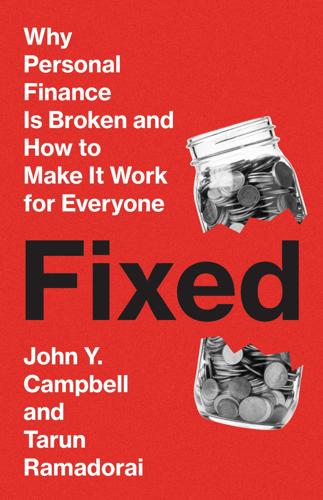
Fixed: Why Personal Finance is Broken and How to Make it Work for Everyone
by
John Y. Campbell
and
Tarun Ramadorai
Published 25 Jul 2025
Stefano DellaVigna and Elizabeth Linos, “RCTs to scale: Comprehensive evidence from two nudge units,” Econometrica 90 (2022): 81–116, compares the results reported in academic nudge studies with those obtained by real-world nudge units operating on a larger scale. Focusing on nudges with binary outcomes (such as participation or nonparticipation in a retirement plan), the paper shows that the average nudge studied in an academic paper increases the outcome by about 8.7 percentage points (33% of its initial level) while the average nudge implemented by a nudge unit increases it by only 1.4 percentage points (8% of its initial level).
…
Such strategies received a fillip from early research showing that default options can achieve retirement plan participation rates above 85% among new employees—twice the typical participation rates six months after being hired among employees who had not been enrolled by default, and well above the participation rates among such employees even three years after being hired.29 Nudge solutions have become enormously popular in regulatory and policymaking circles. In 2010 the UK government set up a Behavioral Insights Team, or “nudge unit,” that sought to implement these ideas broadly in multiple areas of policymaking. In 2015 the US government followed suit by establishing the Office of Evaluation Sciences. In 2019 the Indian Economic Survey, an important policy document issued each year by the Indian Chief Economic Advisor, devoted an entire chapter to nudge-based solutions to economic policy problems. By the late 2010s there were over 200 nudge units operating worldwide.30 However, these ideas, while they can generate beneficial consequences and certainly have a role in policy, have their limits.
…
See also race Africrypt exchange, 191 age, financial literacy and, 33–35, 34–35 age pyramid, 151, 152 Akerlof, George, 55 algorithmic discrimination, 189, 197–198 Alipay, 184, 293n17 allocation of retirement assets, 165–169, 257–259 AlphaGo Zero program, 43–44 alternative financial products/services, 53, 68–74; friends and family, 71–72, 89, 280–281n15; moneylenders and loan sharks, 72–74; money under the mattress, 69–70 ambiguity aversion, 291n6 annual percentage rate (APR), 91; credit cards and, 92, 206; paying off debt in order of, 94–95; reducing on existing debt, 95 annual percentage rate (APR) disclosures, 206, 282n31 annuities, 169–172; deferred payout, 172; failure to buy, 273n2; markups on, 170–171; in starter kit, 259–260; variable, 300n33 Apothecaries’ Act (1815), 228, 312–313n65 artificial intelligence (AI): bias and, 189; fintech and, 180; patents, 301n1 Asimov, Isaac, 184–185 asset accumulation, paying off debt to enable, 268n22 asset allocation: diversification and, 292n13; in retirement accounts, 165–169, 257–259 asset management fees, 137–138 asset management skill, 137 assets, allowing people with limited resources to own shares of large, 8 assumable mortgages, 248, 315n20 Augustine, Saint, 48 Australian pension system, 160, 298n10 automated savings reminders, 222–223 automated teller machines (ATMs), 199, 304n38 automatic refinancing, 247, 315n18 automatic savings goal reminders, 240, 241 automating financial decisions, 228–230 Bach, Laurent, 22 Bank of Israel, 224, 289n36, 311n57 bankruptcy: personal, 96; protections in law, 283n41; reform of code, 244; student loan debt and, 284n1 banks: automated savings reminders from, 222–223; loans from, 89–90; outdated regulation of deposit insurance and, 188–189; overdraft fees, 92–93, 225; overdraft protection, 214; US consumers’ attachment to physical branches, 275n14 base rate neglect, 43 “Basiskonto,” 236 Bayes, Thomas, 271n16 Bayes’ Theorem, 271n16 Behavioral Insights Team (nudge unit) (UK), 212 bias: fintech and, 189; present, 48–49 biased self-attribution, 45 billionaires, wealth in emerging economies and number of, 267n20 birth rate, funding retirement and declining, 151 Bitcoin, 192; as payment vehicle for illicit transactions, 194; price since inception, 193; transaction fees, 305n4 BlackRock Emergency Savings Initiative, 222, 313n5 Bleemer, Zachary, 105 blockchain technology, 68, 179; decentralized finance and, 187–188, 190 Blundell, Richard, 282n25 Bodie, Zvi, 7, 8 Boeing, 133 bonds, retirement investments and, 166–168 Book of Common Prayer, 145 borrowers, matching with lenders, 242–243 borrowing, 8, 88–93; from families and friends, 71–72, 89, 280–281n15; to fund higher education, 106–110; richer people borrowing more cheaply, 20–21, 27.
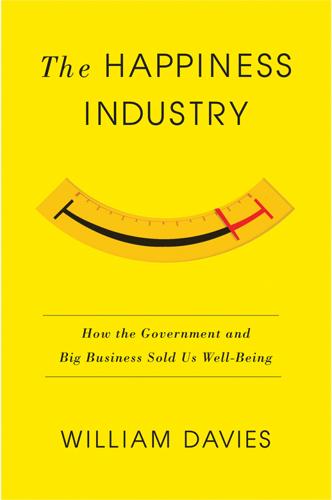
The Happiness Industry: How the Government and Big Business Sold Us Well-Being
by
William Davies
Published 11 May 2015
In 2013, the British government was embarrassed when a blogger discovered that jobseekers were being asked to complete psychometric surveys whose results were completely bogus.19 Regardless of how the user answered the questions, they got the same results, telling them what their main strengths are in the job market. It later transpired that this was an experiment being run by the government’s ‘Nudge Unit’, to see if individual behaviour was altered by having this survey offer them these findings. Social reality had been manipulated to generate findings for those looking down from above. This logic of experimentation allows for policies to be introduced which would otherwise seem entirely unreasonable, or even illegal.
…
In that sense, due process becomes viewed as an inefficient blockage, standing in the way of behaviour change. The much-celebrated HOPE (Hawaii’s Opportunity Probation with Enforcement) programme, which builds directly on this body of evidence, ensures that repeat offenders know they will be jailed immediately if found up to no good. Projects such as the Hudson Yards quantified community, the Nudge Unit’s fake survey and HOPE share a number of characteristics. Most obviously, they are fuelled by a high degree of scientific optimism that it may be possible to acquire hard objective knowledge regarding individual decision-making, and then to design public policy (or business practices) accordingly.
…
Today, the fact that it is ‘quants’ (mathematicians and physicists, equipped with algorithmic techniques to explore large data sets) who are rendering our behaviour predictable is deemed all the more promising, given these individuals are not burdened by any theory of what distinguishes human beings or societies from any other type of system. Secondly, the surveillance. As examples such as Hudson Yards or the Nudge Unit indicate, the new era of behaviourist exuberance has emerged on the basis of new high-level alliances between political authorities and academic researchers. Without those alliances, social scientists continue to labour under the auspices of ‘theory’ and ‘understanding’, as indeed we all do when seeking to interpret what each other are up to in our day-to-day lives.
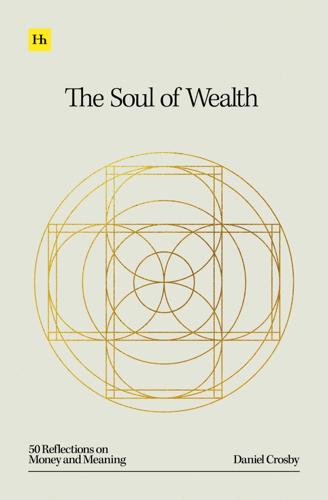
The Soul of Wealth
by
Daniel Crosby
Published 19 Sep 2024
Make Good Easy, Make Bad Hard Many laws, tax rules, and regulations require us to jump through hoops and hire Ph.D.s and attorneys just to understand what we need to do or not do to please our government overlords. But some of the most successful public policies are rooted in simplicity and clarity, playing on our inclination to be lazy. The Behavioral Insights Team (BIT), also known unofficially as the Nudge Unit, has achieved significant accomplishments by incorporating behavioral science into government directives. Through the skillful application of behavioral science, the global social purpose organization formed in 2010 has improved tax compliance, championed healthy behaviors, enhanced pension enrollment and retirement savings, enacted education reform, and continues to address flaws in the criminal justice system, including focusing on the rehabilitation of inmates.
…
Through the skillful application of behavioral science, the global social purpose organization formed in 2010 has improved tax compliance, championed healthy behaviors, enhanced pension enrollment and retirement savings, enacted education reform, and continues to address flaws in the criminal justice system, including focusing on the rehabilitation of inmates. A common thread throughout BIT’s many successful initiatives is the idea that making things easier leads to an increase in a desired behavior. In contrast to the intimidating and complex language used in IRS letters, the Nudge Unit utilizes personalized and simple messaging, resulting in improved compliance and increased tax revenue collection. In terms of a healthier society, clearer nutrition labels designed by the team along with impactful warnings that underscore the dangers of smoking have resulted in healthier food choices by families and higher quit rates among smokers.
…
On the financial front, BIT’s work on simplifying retirement plan enrollment continues to draw workers to save for the future. Simplified goal setting, peer support, and personalized messaging have had a profound impact on pupils, enhancing student performance. Finally, behavioral insights and interventions in the criminal justice system have resulted in lower levels of prison recidivism. While the behaviors the Nudge Unit has been tasked with solving for are diverse and wide-ranging, a single model sits behind much of their success: A widely applicable model known as the EAST framework. EAST is an easily remembered acronym that stands for Easy, Attractive, Social, and Timely. “The behavioural science literature can be complex, so having a simple framework which policymakers can easily access and apply is invaluable.
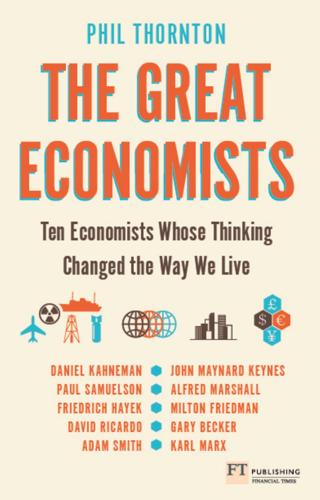
The Great Economists Ten Economists whose thinking changed the way we live-FT Publishing International (2014)
by
Phil Thornton
Published 7 May 2014
Many of those who worked with him, studied under him, or were simply inspired by him, have built on his findings to further refine the genre. Policymakers increasingly accept the findings of the research by Kahneman and others into behavioural economics and finance. In the UK, the Cabinet Office has established a Behavioural Insights Team while the Department for Food and Rural Affairs has set up a Centre of Expertise on Influencing Behaviour. Regulatory bodies across the world such as the US Federal Trade Commission, the UK Office for Fair Trading, the OECD and the Australian Productivity Commission have begun to take behavioural economics into serious consideration and have already carried out behavioural studies to inform some of their regulatory policies.
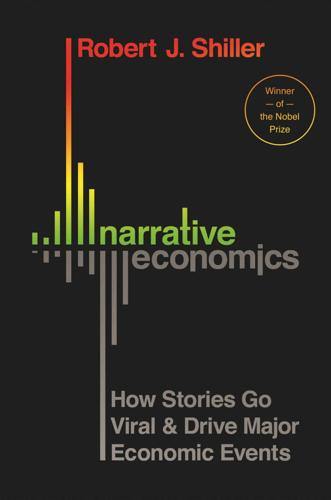
Narrative Economics: How Stories Go Viral and Drive Major Economic Events
by
Robert J. Shiller
Published 14 Oct 2019
“Reading Aloud,” Washington Post, October 25, 1899, p. 6. 4. See Colley, 2003. 5. Regarding women, see Driscoll et al., 2009. 6. OECD, “Behavioral Insights,” 2017, http://www.oecd.org/gov/regulatory-policy/behavioural-insights.htm. See also Zeina Afif, “ ‘Nudge Units’—Where They Came From and What They Can Do,” World Bank “Let’s Talk Development” blog, October 25, 2017, http://blogs.worldbank.org/developmenttalk/nudge-units-where-they-came-and-what-they-can-do. 7. https://millercenter.org/the-presidency/presidential-speeches/march-4-1933-first-inaugural-address. 8. https://millercenter.org/the-presidency/presidential-speeches/march-12-1933-fireside-chat-1-banking-crisis. 9.
…
Fortunately, the behavioral economics revolution of the last few decades has brought economic research closer to that of other social sciences. No longer do economists routinely assume that people always behave rationally. One widespread and important innovation is the creation of economic think tanks interested in creating policies based on the insights of behavioral economics. These think tanks have been called “nudge units,” following the Behavioral Insights Team in the UK government in 2010. Working with the ideas popularized by Richard Thaler and Cass Sunstein in their 2008 book Nudge: Improving Decisions about Health, Wealth, and Happiness, these units try to redesign government institutions toward “nudging” people away from their irrational behavior without coercing them.
…
See also brain Newcomb, Anthony, 35 “New Deal,” coined by Stuart Chase, 185 The New Financial Order (Shiller), 38 news media: creative during major stock market corrections, 75; economic narratives spread through, 3, 21; improving retention with narrative presentation, 77; international economic narratives and, 110; marketing-driven, 61–62; in modified SIR model, 297; reminding public on anniversaries of events, 76; searching for words and phrases in, x Nixon, Richard, 173 normalcy, 244, 252 North, Douglass, 14 Northern Rock bank run in 2007, 119, 135 novels: classical symphony as, 35; understanding human experience and, 16. See also fiction Noyes, Alexander Dana, 127, 164, 231 Nudge (Thaler and Sunstein), 278 nudge units, 277–78 NVIDIA Corporation, 20 O’Barr, William M., 15 Occupy Wall Street protest, 8, 225 office workplace: automation of, 204; labor-saving machinery narrative and, 186 Ohanian, Lee E., 132 oil embargo of 1973, 256 one-hit wonders, 41–42 Only Yesterday (Allen), ix–xi, 139 organ donation, narrative presentation of, 78 overlapping generations model, 24–25, 27f, 303n8 overproduction or underconsumption theory, 187–92 “Ownership Society” (Bush reelection slogan), 155 oxytocin, 54 Oz: The Great and Powerful (film), 172 Palme, Olof, 48–49 panic: at beginning of World War I, 93–94; creation of Federal Reserve and, 117; in financial crisis, 55–56, 86; following complacency, 55–56; Great Depression seen as, 128; inflation in 1970s and, 262; stock prices and, 228.
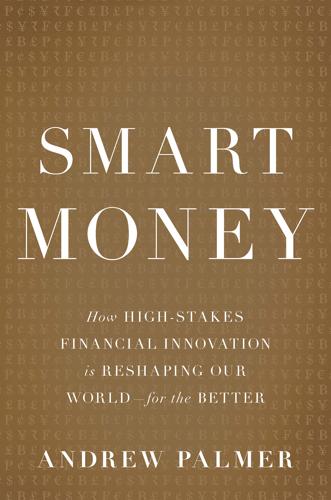
Smart Money: How High-Stakes Financial Innovation Is Reshaping Our WorldÑFor the Better
by
Andrew Palmer
Published 13 Apr 2015
Stephen King, When the Money Runs Out (New Haven, CT: Yale University Press, 2013). 3. “Entitlements in America,” Economist, May 25, 2013. 4. Jon Baron and Isabel Sawhill, “We Need a New Start for Head Start” (Brookings Institution, March 2010). 5. “Test, Learn, Adapt: Developing Public Policy with Randomised Controlled Trials” (United Kingdom Cabinet Office Behavioural Insights Team, 2012). 6. William Foster and Gail Fine, “How Nonprofits Get Really Big,” Stanford Social Innovation Review (Spring 2007), http://www.ssireview.org/articles/entry/how_nonprofits_get_really_big. 7. John List, “The Market for Charitable Giving,” Journal of Economic Perspectives (Spring 2011). 8.
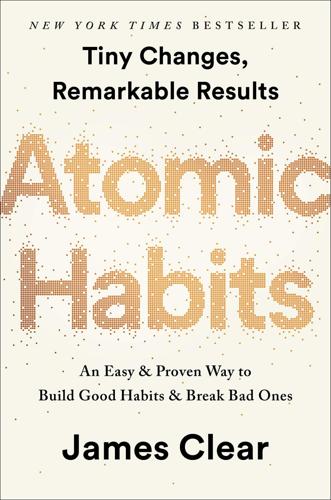
Atomic Habits: An Easy & Proven Way to Build Good Habits & Break Bad Ones
by
James Clear
Published 15 Oct 2018
I’m indebted to Shane Parrish for priming my thoughts on this topic by writing about why “avoiding stupidity is easier than seeking brilliance.” Shane Parrish, “Avoiding Stupidity Is Easier Than Seeking Brilliance,” Farnam Street, June 2014, https://www.fs.blog/2014/06/avoiding-stupidity. those percentage points represent millions in tax revenue: Owain Service et al., “East: Four Simple Ways to Apply Behavioural Insights,” Behavioural Insights Team, 2015, http://38r8om2xjhhl25mw24492dir.wpengine.netdna-cdn.com/wp-content/uploads/2015/07/BIT-Publication-EAST_FA_WEB.pdf. Nuckols dialed in his cleaning habits: Oswald Nuckols is an alias, used by request. “perfect time to clean the toilet”: Saul_Panzer_NY, “[Question] What One Habit Literally Changed Your Life?”

Work Rules!: Insights From Inside Google That Will Transform How You Live and Lead
by
Laszlo Bock
Published 31 Mar 2015
Colleen Giblin, “The Perils of Large Plates: Waist, Waste, and Wallet,” review of “The Visual Illusions of Food: Why Plates, Bowls, and Spoons Can Bias Consumption Volume,” by Brian Wansink and Koert van Ittersum (FASEB Journal 20, no. 4 [2006]: A618), Cornell University Food and Brand Lab, 2011, http://foodpsychology.cornell.edu/outreach/large-plates.html. 243. Wansink and Ittersum, “Visual Illusions of Food.” 244. Leo Benedictus, “The Nudge Unit—Has It Worked So Far?” Guardian, May 1, 2013, http://www.theguardian.com/politics/2013/may/02/nudge-unit-has-it-worked. 245. Britton Brewer, “Adherence to Sport Injury Rehabilitation Regimens,” in Adherence Issues in Sport and Exercise, ed. Stephen Bull (New York: Wiley, 1999), 145–168. 246. Richard H. Thaler, “Opting In vs. Opting Out,” New York Times, September 26, 2009, http://www.nytimes.com/2009/09/27/business/economy/27view.html. 247.
…
Design deliberately and with intent Nudges are an incredibly powerful mechanism for improving teams and organizations. They are also ideally suited to experimentation, so can be tested on smaller populations to fine-tune their results. Prime Minister David Cameron of the United Kingdom established a “nudge unit” in 2010 that has improved collection of car taxes by 30 percent by sending overdue-tax notices along with a bold “Pay your tax or lose your [make of car]” label and a photo of the car. The unit also improved collection of court fines by 33 percent by sending notices by text message instead of mail.
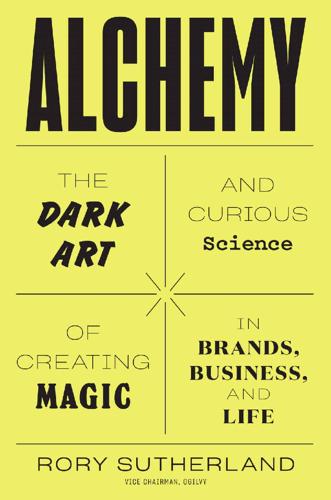
Alchemy: The Dark Art and Curious Science of Creating Magic in Brands, Business, and Life
by
Rory Sutherland
Published 6 May 2019
Bootleggers, for obvious financial reasons, were heavily opposed to the removal of Prohibition in the United States. *In Britain, credit is owed to Public Health England and ASH, an anti-smoking campaign group; in the US, a former Surgeon-General was a great advocate of the invention. I even played a small part myself, by persuading the UK Government’s Behavioural Insights Team to resist a knee-jerk urge to ban them. *Frankly, I was surprised by how low the figures were. I would have expected at least 5 per cent of non-smokers to give e-cigs a try. What’s going on? *However, this works only if you have spent a lot of your life drinking real G&Ts. Among heavy drinkers, the brain doesn’t wait for the booze to kick in – it shortcuts straight to the expected level of drunkenness.

Human Frontiers: The Future of Big Ideas in an Age of Small Thinking
by
Michael Bhaskar
Published 2 Nov 2021
Welcome to the great meta-problem of the twenty-first century. We're at a curious juncture of history. To open the latest Wired, Nature or cultural review is to be treated to a parade of wonders: extraordinary new discoveries, products and achievements. From quantum biology, nanotechnology and exoplanet astronomy to nudge unit governance, blockchain and virtual worlds, surely this is a uniquely fecund moment when the frontier is expanding at a record and still accelerating pace. Mounting evidence suggests the opposite. A lively debate is calling into question these dominant assumptions about our place in history and the default nature of progress.
…
Political tropes, like their cultural counterparts, are endlessly recycled, whether it is the feckless poor or greedy financiers. Most radical policy proposals are decades old: nationalisation; privatisation; fiscal tweaking with tax rises and tax cuts. This paralysis means ‘new anxieties’ are faced with ‘old ideologies’.19 Some new ideas get through: nudge unit governance for example, or perhaps nascent concepts like Universal Basic Income or Modern Monetary Theory.20 But in general, despite progress, we lack ideas to solve questions as diverse and significant as loneliness, homelessness, social care, care of the elderly and child care.21 Even the most energised debates – about race, gender or the environment, for example – have their roots in the 1960s and earlier.
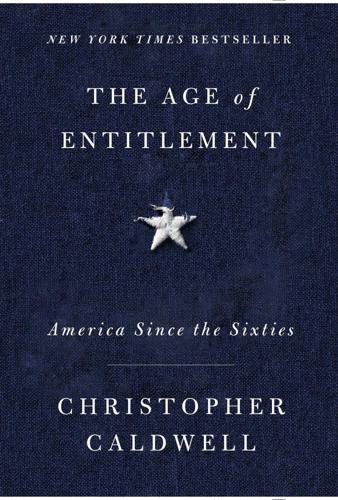
The Age of Entitlement: America Since the Sixties
by
Christopher Caldwell
Published 21 Jan 2020
During the presidential campaign of 2008, two of Barack Obama’s friends and advisors from the University of Chicago collaborated on a book called Nudge, which used behavioral economics to justify an activist state. The law professor Cass Sunstein would become the senior advisor on regulation to the Obama White House. The economist Richard Thaler, an early collaborator of Kahneman, would take up a similar role as head of the Behavioural Insights Team for Britain’s Conservative prime minister David Cameron. Thaler and Sunstein laid out the baleful consequences of poorly designed choosing systems and suggested ways to fix them. Schoolchildren carrying their trays through lunch lines don’t usually mull over which dessert they prefer; they often grab the first thing their eyes alight on.
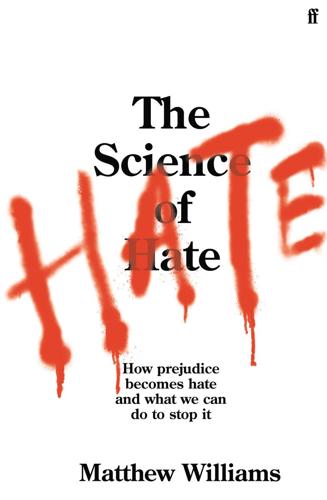
The Science of Hate: How Prejudice Becomes Hate and What We Can Do to Stop It
by
Matthew Williams
Published 23 Mar 2021
At the time of the Brexit vote, according to an editorial in the Spectator, ‘Perhaps the referendum did lead to a rise in hate crime. Then again, perhaps it didn’t. But despite the angry reports blaming Brexit, the only thing that is clear is that there is little proof either way.’ To get a definitive answer, the UK Cabinet Office Behavioural Insights Team and my HateLab at Cardiff University set out to generate the most complete picture of hate crime in the UK by pulling together every source of information, from police records to data on Facebook posts. In the face of right-leaning newspaper headlines such as the Daily Mail’s ‘Great Brexit Hate Crime Myth’, we set out to explore whether the divisive polarising narratives promoted by the Leave.EU and Vote Leave campaigns directly led to a genuine rise in hate crimes that continued for many years.

Click Here to Kill Everybody: Security and Survival in a Hyper-Connected World
by
Bruce Schneier
Published 3 Sep 2018
Carter (9 Sep 2014), “Declines in trust in others and confidence in institutions among American adults and late adolescents, 1972–2012,” Psychological Science 25, no. 10, http://journals.sagepub.com/doi/abs/10.1177/0956797614545133. David Halpern (12 Nov 2015), “Social trust is one of the most important measures that most people have never heard of—and it’s moving,” Behavioural Insights Team, http://www.behaviouralinsights.co.uk/uncategorized/social-trust-is-one-of-the-most-important-measures-that-most-people-have-never-heard-of-and-its-moving. Eric D. Gould and Alexander Hijzen (22 Aug 2016), “Growing apart, losing trust? The impact of inequality on social capital,” International Monetary Fund Working Paper No. 16/176, https://www.imf.org/en/Publications/WP/Issues/2016/12/31/Growing-Apart-Losing-Trust-The-Impact-of-Inequality-on-Social-Capital-44197.

Tenants: The People on the Frontline of Britain's Housing Emergency
by
Vicky Spratt
Published 18 May 2022
In 2013, the Housing First Europe project reported that 97 per cent of the high-need homeless people using the Discus Housing First service in Amsterdam were still in their housing after twelve months. In Copenhagen, the rate was 94 per cent overall, with a similarly impressive level of 92 per cent reported by the Turning Point service in Glasgow. Indeed, as Professor David Halpern, director of the Behavioural Insights Team, writes in an urgent collection of essays published by the Centre for Homelessness Impact: ‘Housing First is one of the few interventions to have rigorous evidence behind it.’ It is tried and tested. As the statistics above show, it works. As Kaakinen puts it, ‘With a bit of creative thinking and political ambition there’s no reason that the dots can’t be joined and this approach applied to other kinds of homelessness.

The Future of the Professions: How Technology Will Transform the Work of Human Experts
by
Richard Susskind
and
Daniel Susskind
Published 24 Aug 2015
The largest three strategy consultancies have built distinct ‘thought-leadership’ practices to develop and spread expertise that is gathered outside of typical consulting assignments (bcg.perspectives, Bain Insights, and McKinsey Insights, respectively). New consulting disciplines have emerged. There is ‘digital’ consulting, from organizations like BCG Digital Ventures and Deloitte Digital, and ‘behavioural’ consulting, applying insights from social psychology, from organizations like the Behavioural Insights Team (once part of the British Government, now part of NESTA).232 Beyond the traditional consulting organizations is a growing number of individual consultants, small boutique consultancies, and specialized research or data analytics firms, all actively competing for work. Hal Varian, Google’s chief economist, calls these set-ups ‘micro-nationals’, made possible by the Internet providing ‘communication capabilities that only the largest multinationals could afford 15 years ago’.233 The Internet also supports network-based organizations that draw on pools of experts and consultants to provide on-demand services.
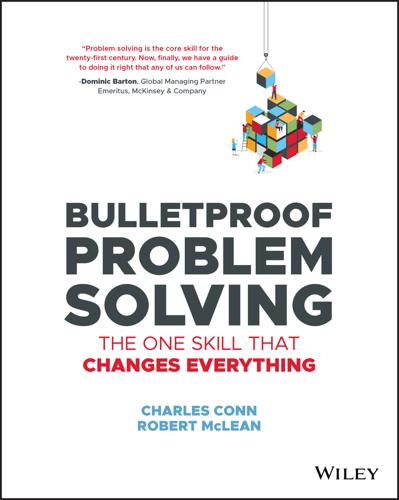
Bulletproof Problem Solving
by
Charles Conn
and
Robert McLean
Published 6 Mar 2019
They drew on this connectedness to argue that “medical and public health interventions might be more cost effective than initially supposed, since health improvements in one might spread to others.” Could this insight lead to the great social unwinding project? And who better to involve than the UK Behavioral Insights Team, the so‐called nudge unit. Where would they start? In the same way that one person becoming obese impacted others, one person as a spouse, friend, or sibling could take the lead and be supported by committing to regaining normal weight. We now know a lot more than we did a decade ago about social networks; tackling obesity with this knowledge seems a sensible avenue to explore. 4.

The Survival of the City: Human Flourishing in an Age of Isolation
by
Edward Glaeser
and
David Cutler
Published 14 Sep 2021
Harding, Anne. “Heart Stents Used Twice as Often in U.S. vs. Canada.” Reuters, June 15, 2010. www.reuters.com/article/us-heart-stents-idUSTRE65E60220100615. Harper, Hugo, and Michael Hallsworth. Counting Calories: How Under-Reporting Can Explain the Apparent Fall in Calorie Intake. London: Behavioural Insights Team, 2016. Harper, Kristin N., Molly K. Zuckerman, Megan L. Harper, John D. Kingston, and George J. Armelagos. “The Origin and Antiquity of Syphilis Revisited: An Appraisal of Old World Pre-Columbian Evidence for Treponemal Infection.” American Journal of Physical Anthropology 146, no. S53 (November 2011): 99–133. https://doi.org/10.1002/ajpa.21613.
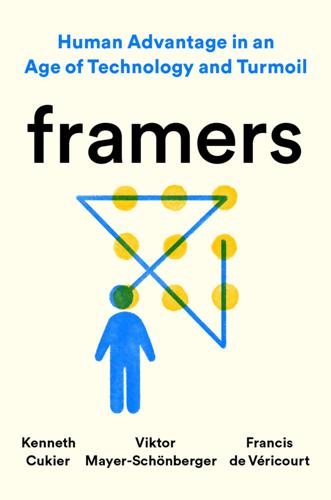
Framers: Human Advantage in an Age of Technology and Turmoil
by
Kenneth Cukier
,
Viktor Mayer-Schönberger
and
Francis de Véricourt
Published 10 May 2021
If a person can influence another’s decision, one can exercise control beyond one’s self. Perhaps counterintuitive at first, the assertion that humans have some sense of agency (and therefore responsibility) is a key precondition for thinking about and exerting control over them. For example, some governments have “nudge units” to influence people’s actions, such as saving electricity by showing them their usage compared with that of their neighbors. Because people have both agency and responsibility, others can impose some influence on them. If humans had no agency, it would be truly senseless to try to shape somebody else’s views.
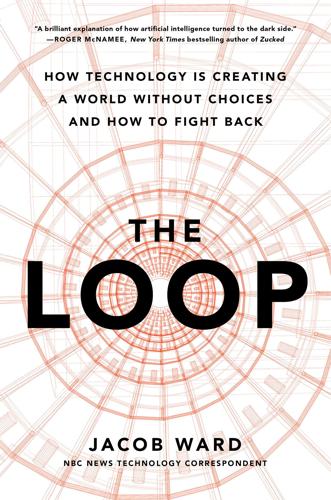
The Loop: How Technology Is Creating a World Without Choices and How to Fight Back
by
Jacob Ward
Published 25 Jan 2022
For instance, whereas a decade ago it was common practice to ask new employees to opt in to their 401(k), Thaler’s work helped inspire a new standard: it’s now common practice at most major companies to enroll employees automatically, which has hugely increased the numbers of people saving for retirement. (The work has been so successful that an entire governmental agency, a nudge unit, was created in the United Kingdom to study and implement tactics for improving British life.) But Thaler despairs of the human allergy to uncertainty. We sat together in the atrium of the Booth School at the University of Chicago, where he teaches, and he began by explaining to me what he and others have found: that humans are hopeless with probability.

SEDATED: How Modern Capitalism Created Our Mental Health Crisis
by
James. Davies
Published 15 Nov 2021
Nudging was therefore the paternal libertarian’s dream – you could now change behaviour through gentle and unconscious coercion and correction rather than through always adjusting laws and regulations. Cameron became so enthused by the idea of ‘coercion by nudge’ that he insisted every government department embrace and deploy the philosophy. He even set up his own permanent nudge unit at Number 10. As this philosophy began infiltrating all government departments, including the DWP, it was blended with features of positive psychology. For instance, the nudge idea that people are motivated by the fear of things being taken away was consistent with the policy embraced by the DWP of threatening to remove benefits if people did not comply with job centre demands.

The Corruption of Capitalism: Why Rentiers Thrive and Work Does Not Pay
by
Guy Standing
Published 13 Jul 2016
Buttiglione, P. R. Lane, L. Reichlin and V. Reinhart, ‘Deleveraging: What Deleveraging?’, Geneva Report on the World Economy 16 (Geneva: International Centre for Monetary and Banking Studies, 2014). 12 A morally inappropriate response has been proposed by influential behavioural economists linked to the nudge units in the White House and 10 Downing Street. This is to ban people from over-borrowing. As one enthusiast put it, ‘What is the big deal? Let’s limit people’s ability to hurt themselves in borrowing, like we do with seatbelts in driving.’ D. Ariely, Predictably Irrational: The Hidden Forces that Shape our Decisions (New York: Harper Collins, 2008).
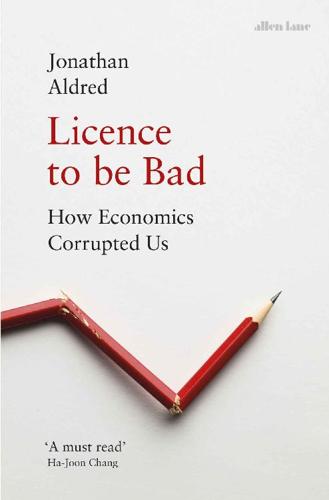
Licence to be Bad
by
Jonathan Aldred
Published 5 Jun 2019
The core idea behind Nudge is that rather than fighting these forces, we should use them, to steer or nudge people to make the choices they would want to make – the choices homo economicus would make, or at least something close. At first, Nudge looked like a passing fashion, just the latest idea from the policy wonks hanging around central government. But it didn’t go away. Sunstein worked for Obama in the White House, Thaler’s ‘Nudge Unit’ advised the Cameron government in the UK, and self-conscious Nudge policies are now being used in around 130 countries.23 Thaler won the Nobel Prize for economics in 2017. Nudge enthusiasts almost always point to the same policy to illustrate the Nudge approach, its flagship success story – automatic enrolment in workplace pensions.

Deep Medicine: How Artificial Intelligence Can Make Healthcare Human Again
by
Eric Topol
Published 1 Jan 2019
Di Sturco, G., “Meet Sophia, the Robot That Looks Almost Human,” National Geographic. 2018. 48. Sagar, M., and E. Broadbent, “Participatory Medicine: Model Based Tools for Engaging and Empowering the Individual.” Interface Focus, 2016. 6(2): p. 20150092. 49. Patel, M. S., K. G. Volpp, and D. A. Asch, “Nudge Units to Improve the Delivery of Health Care.” N Engl J Med, 2018. 378(3): pp. 214–216. 50. Emanuel, E. J., “The Hype of Virtual Medicine,” Wall Street Journal. 2017; Lopatto, E., “End of Watch: What Happens When You Try to Change Behavior Without Behavioral Science?,” Verge. 2018. 51. Marteau, T. M., “Changing Minds About Changing Behaviour.”